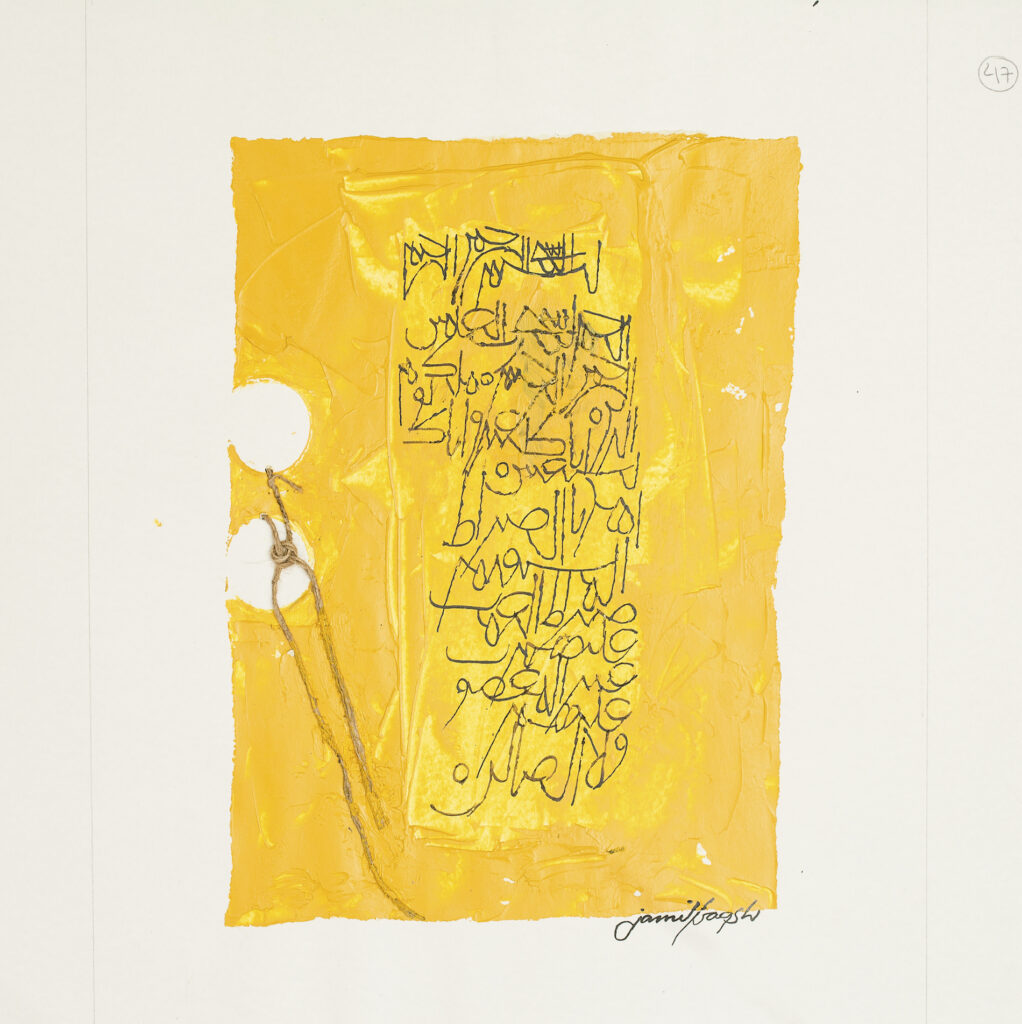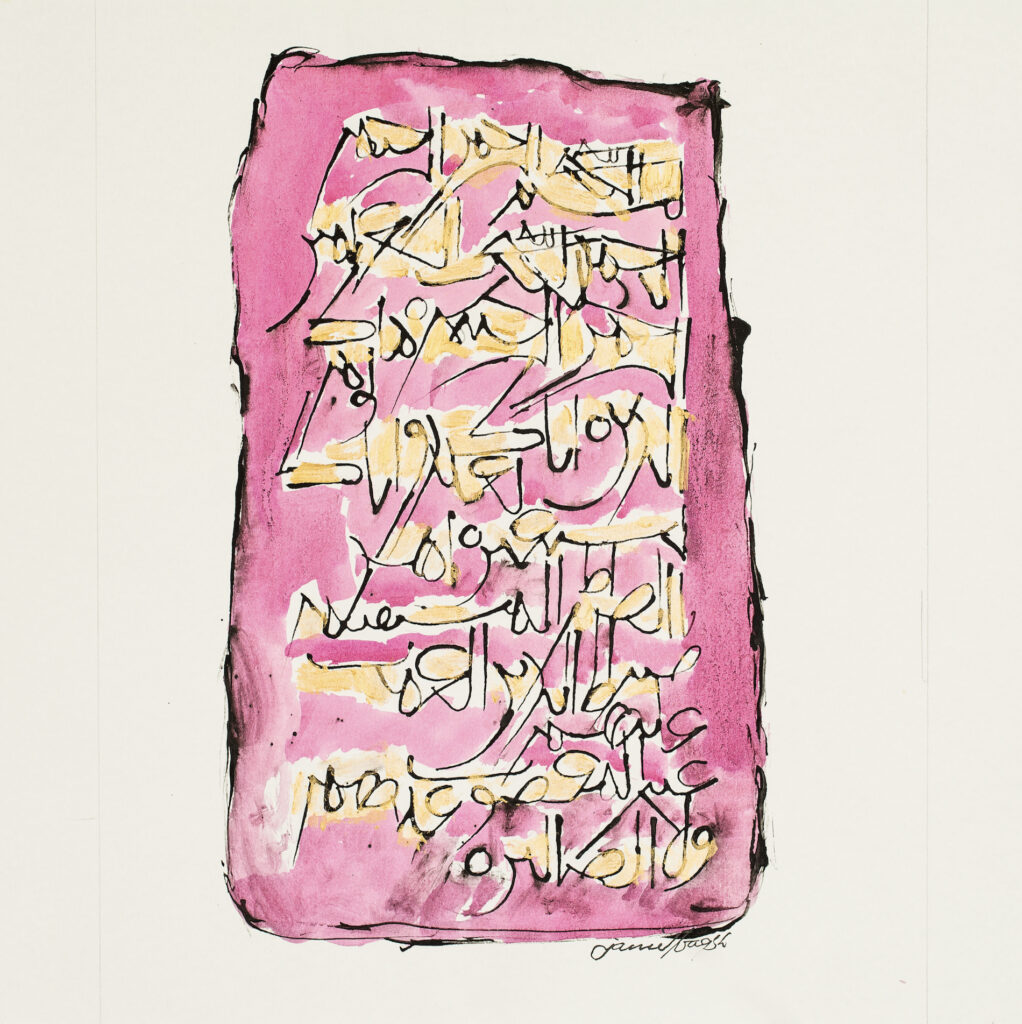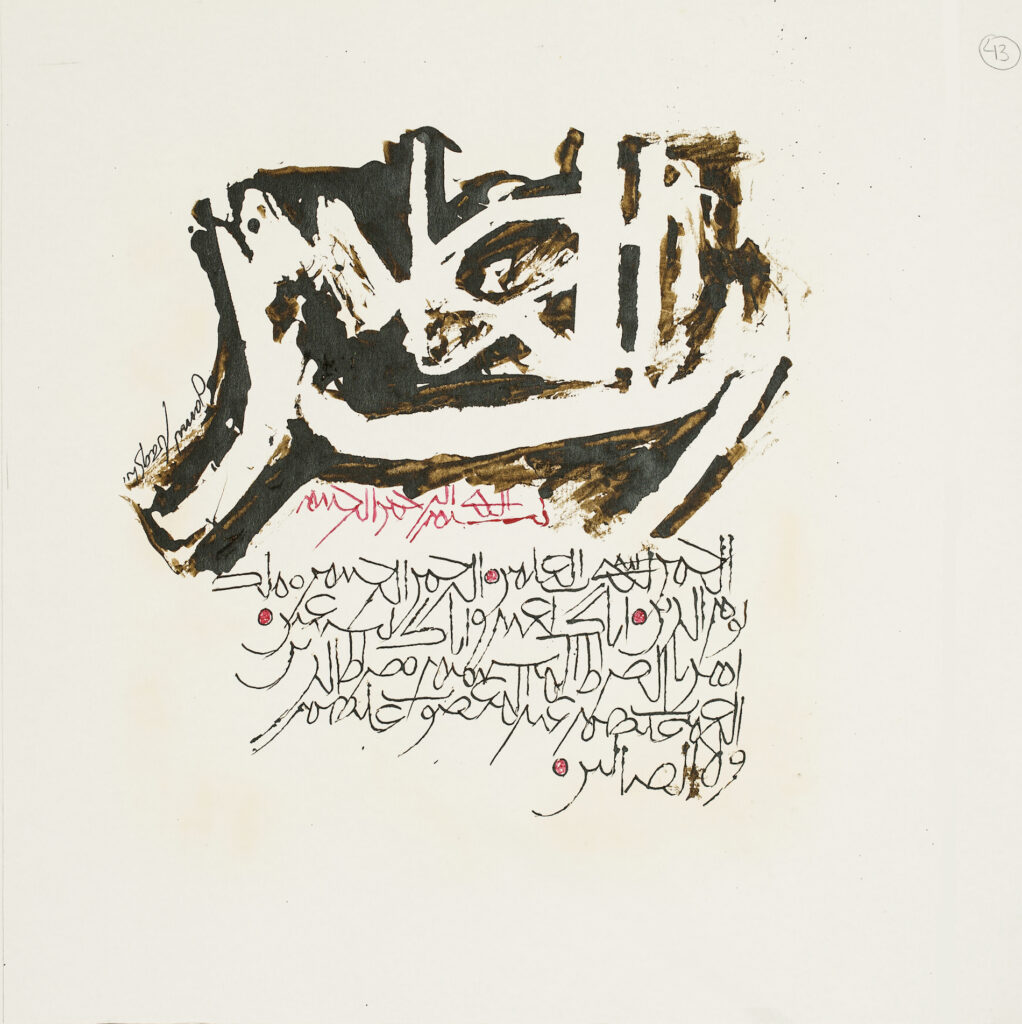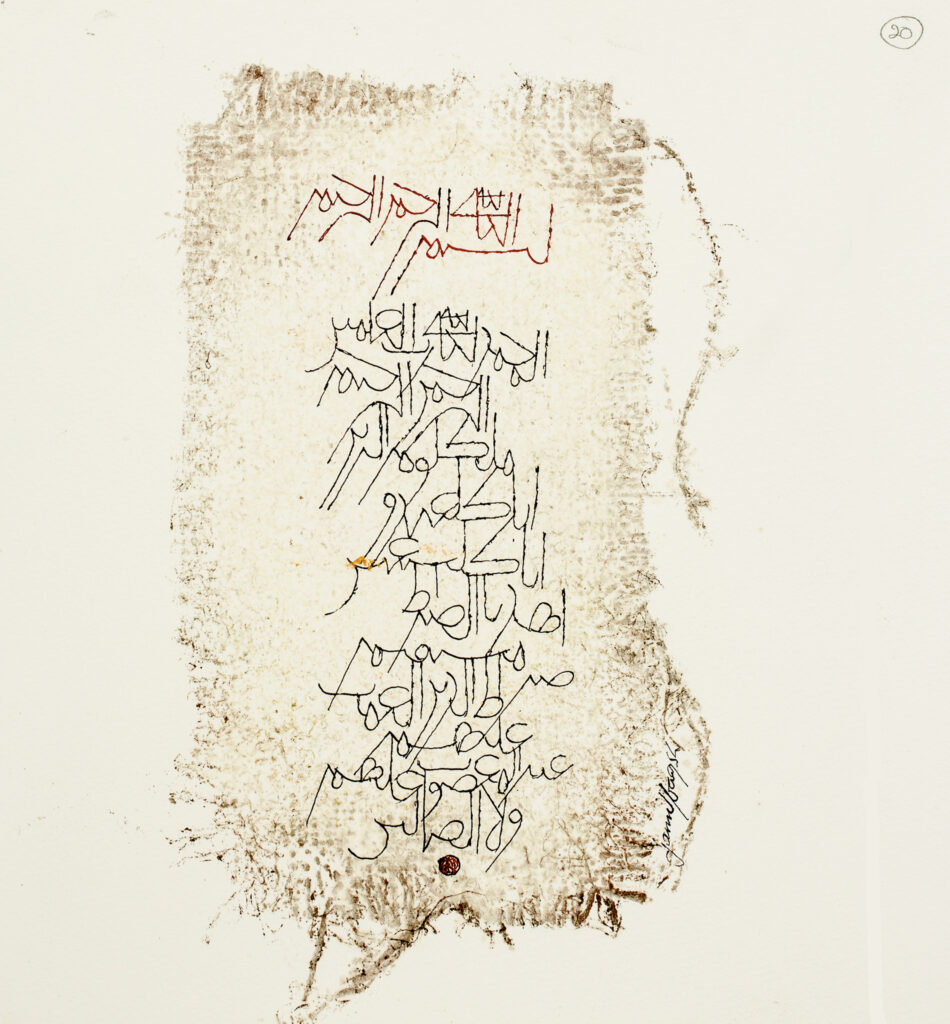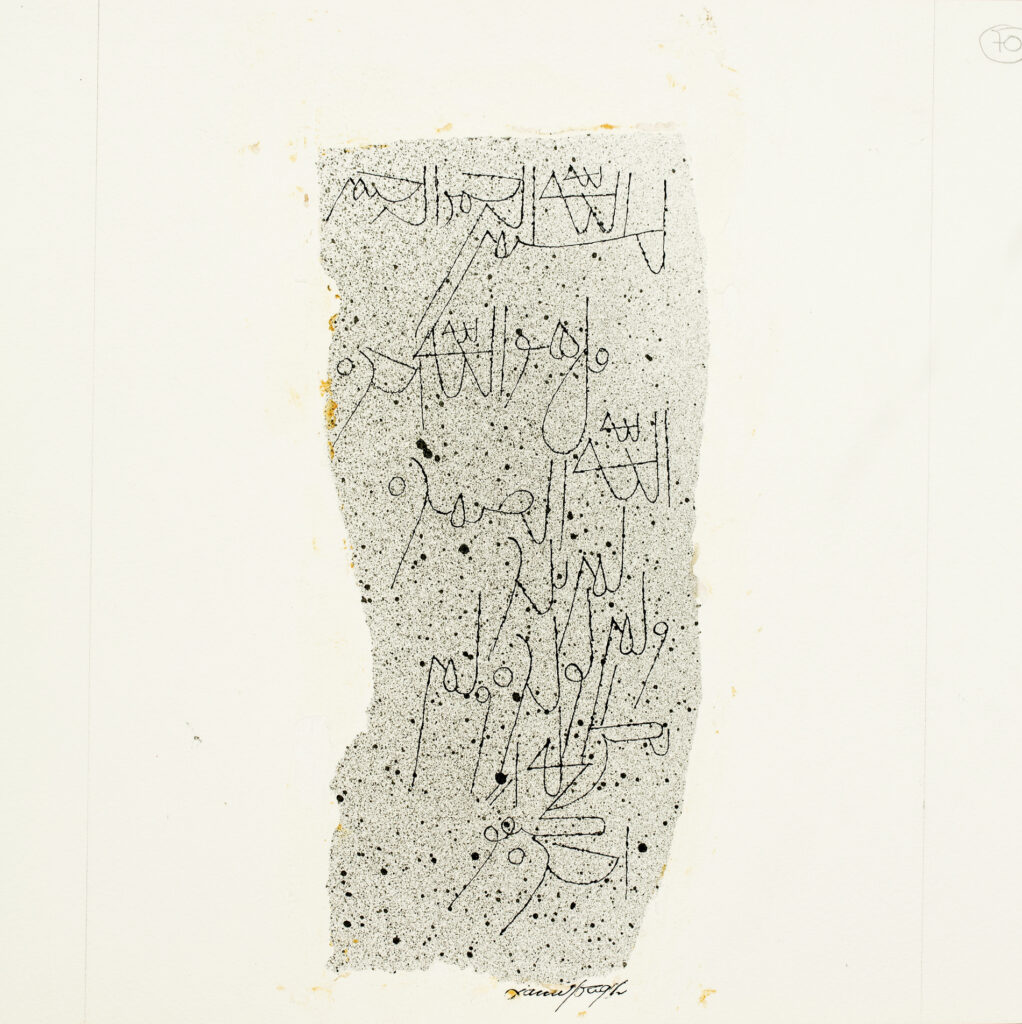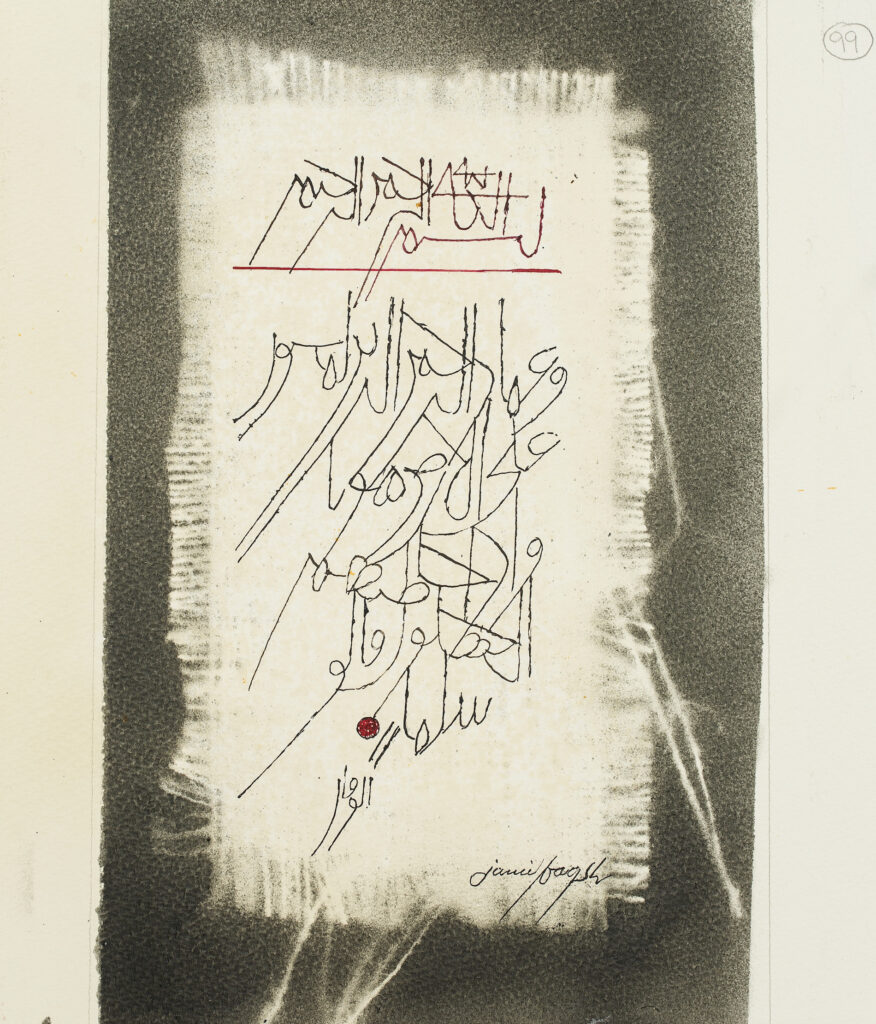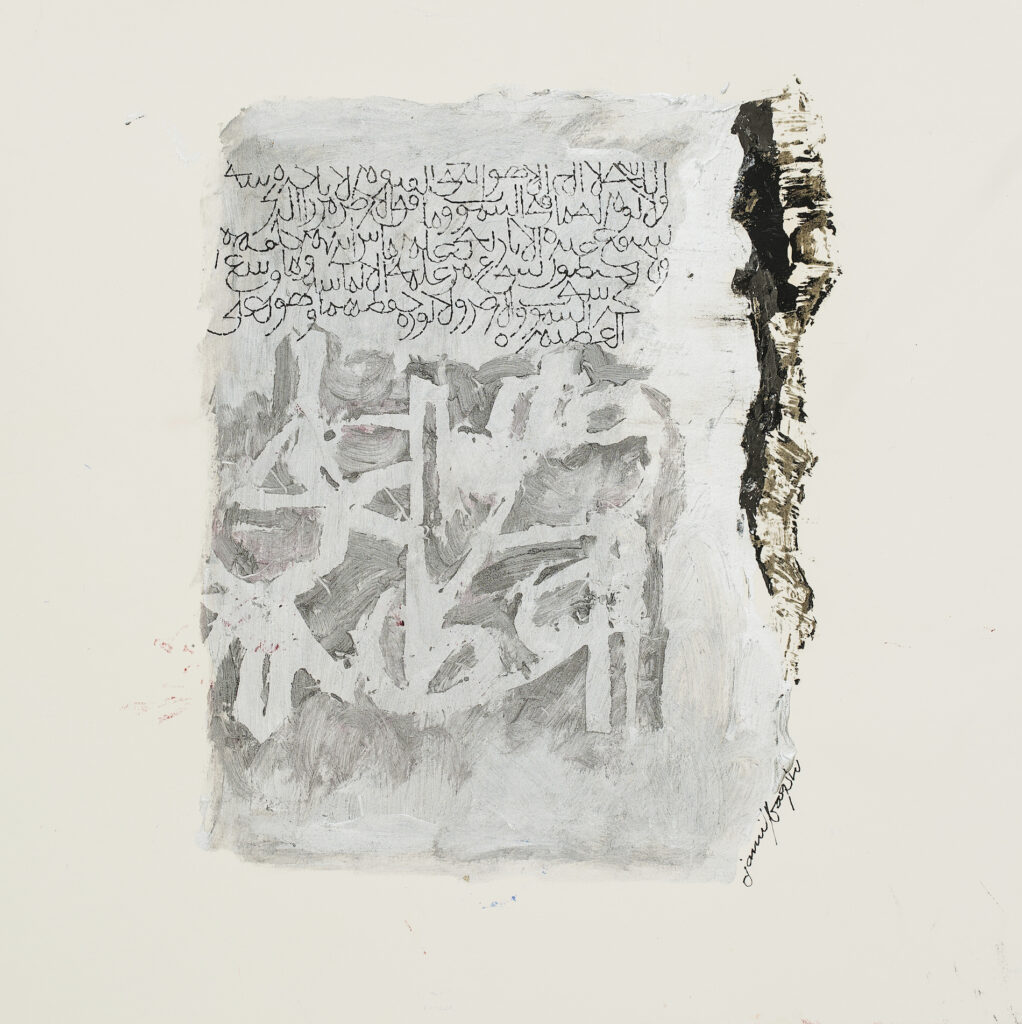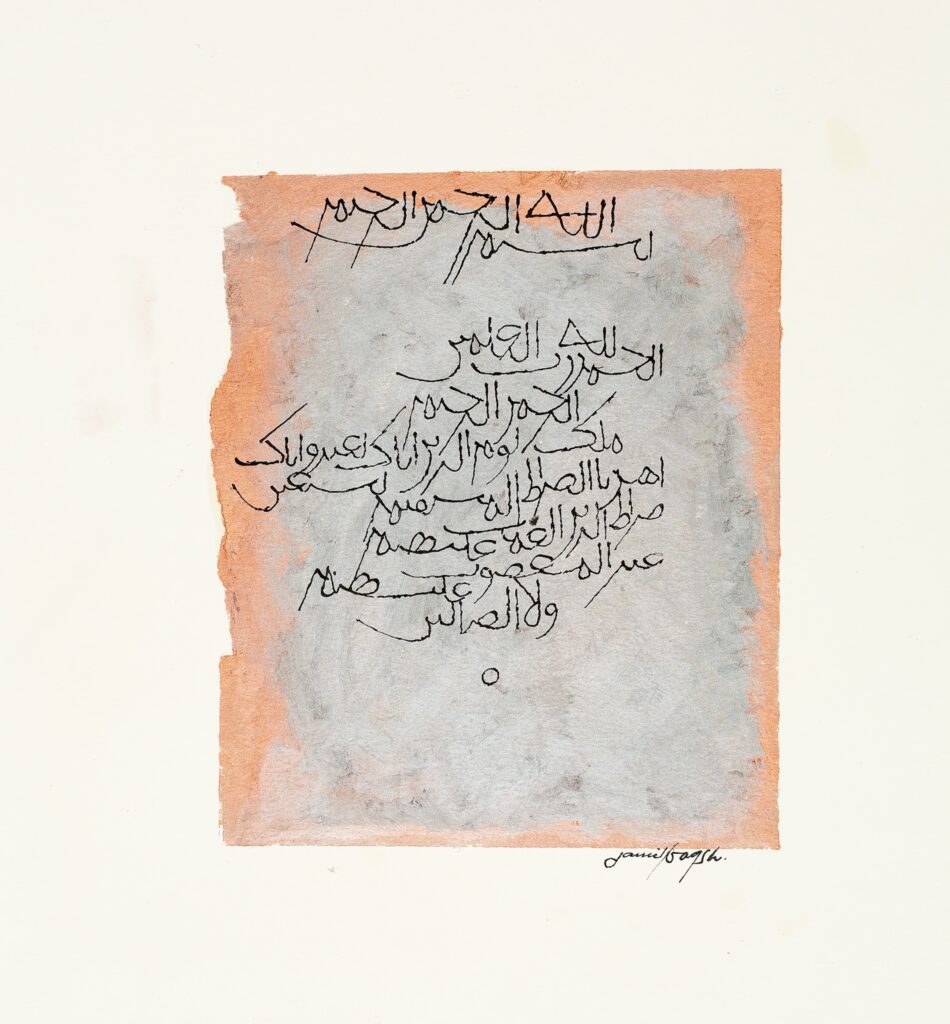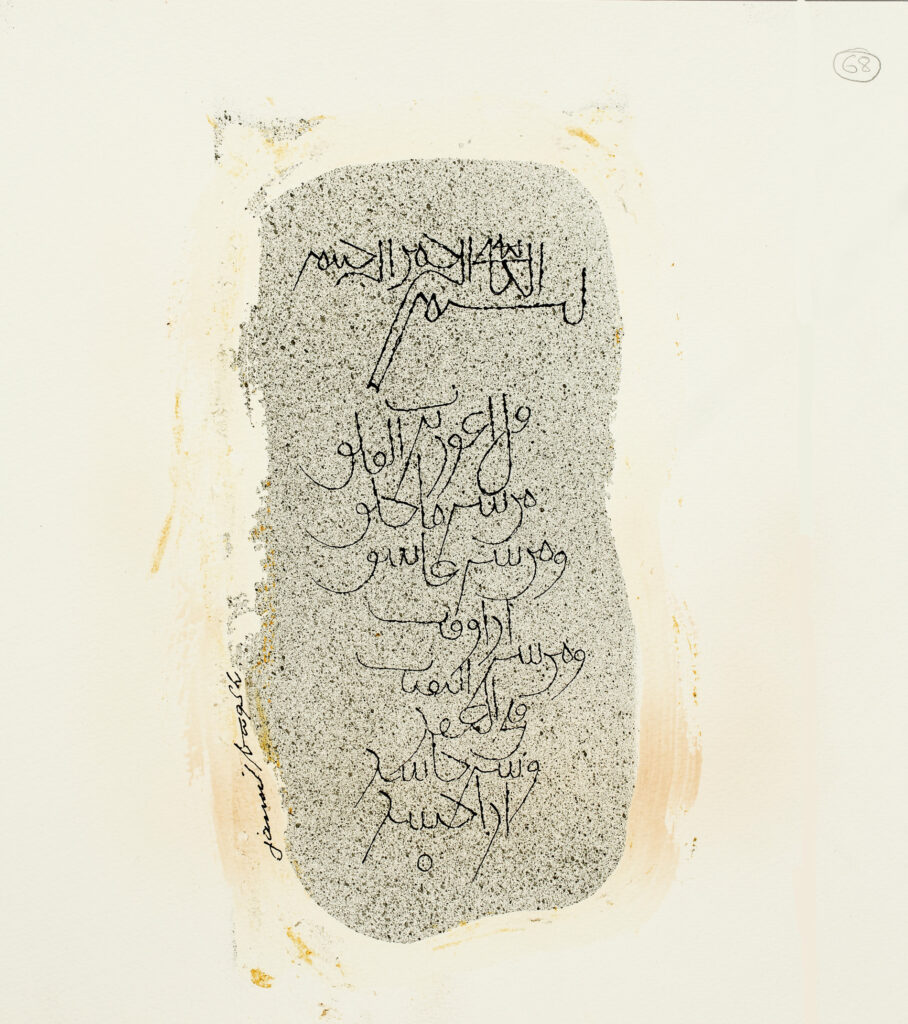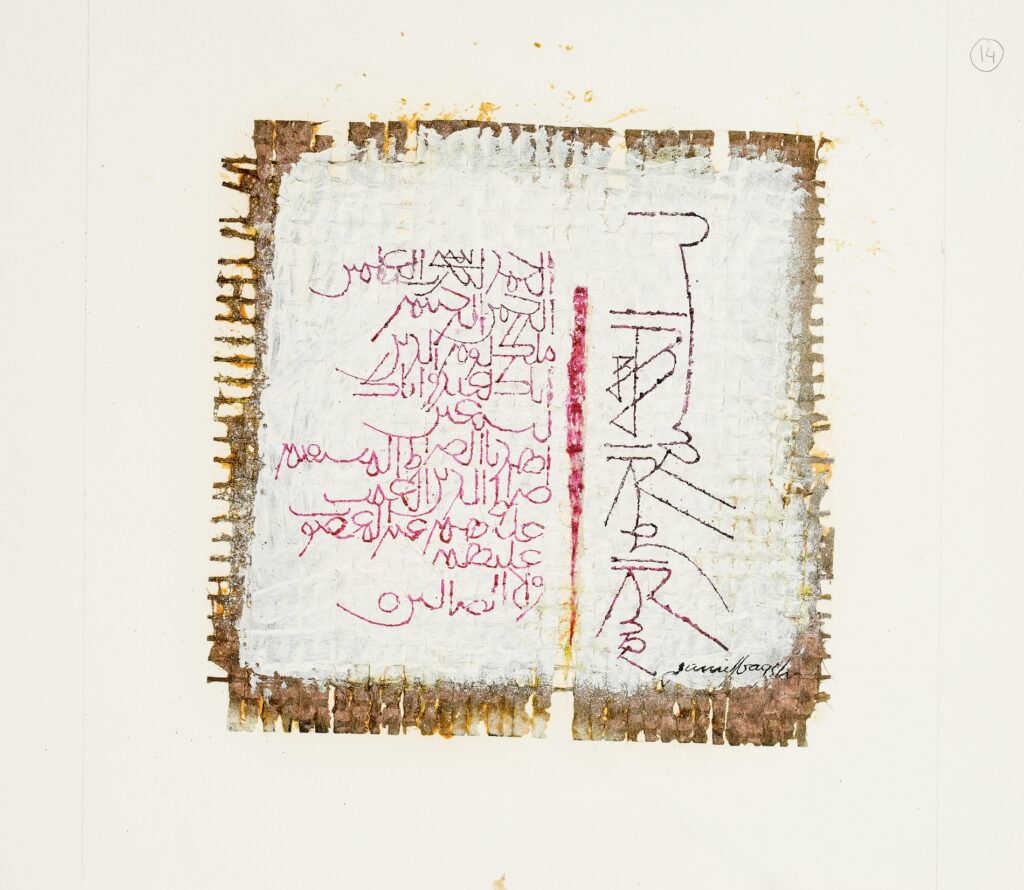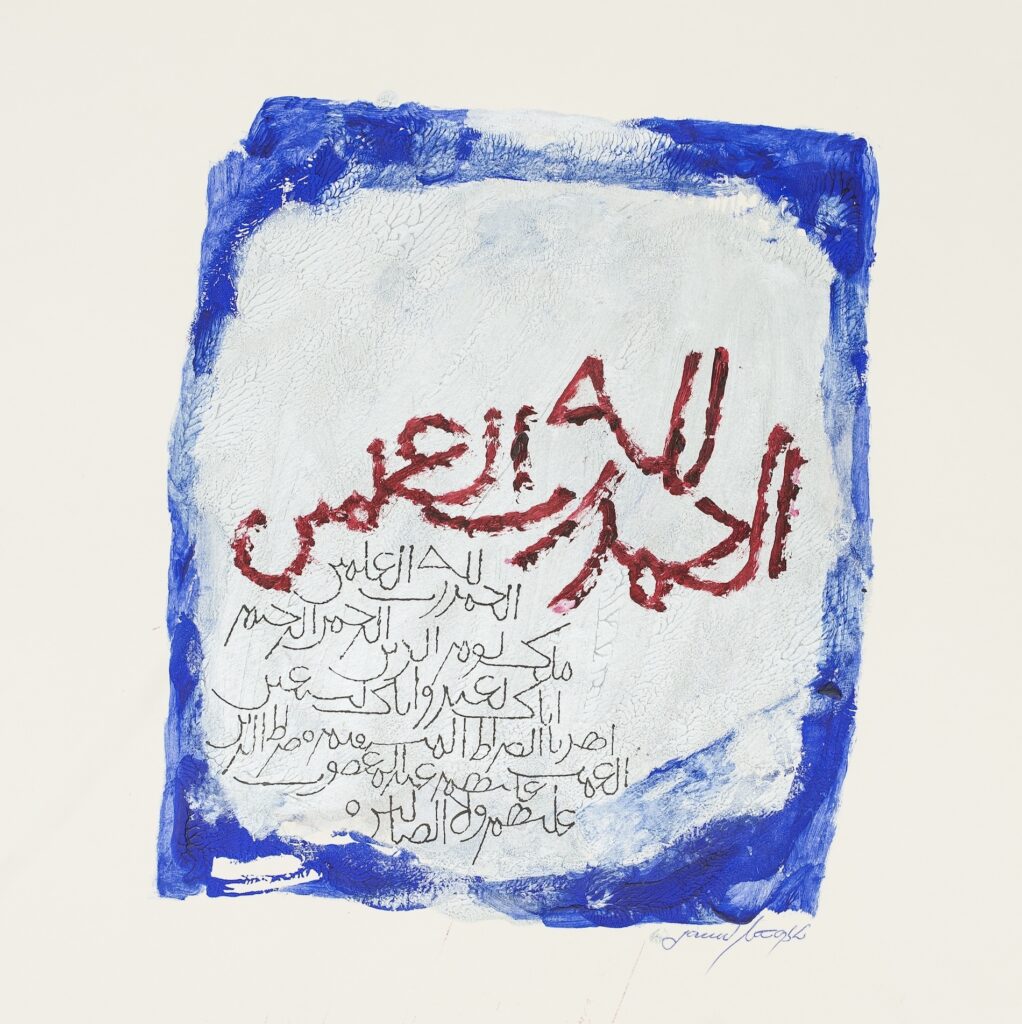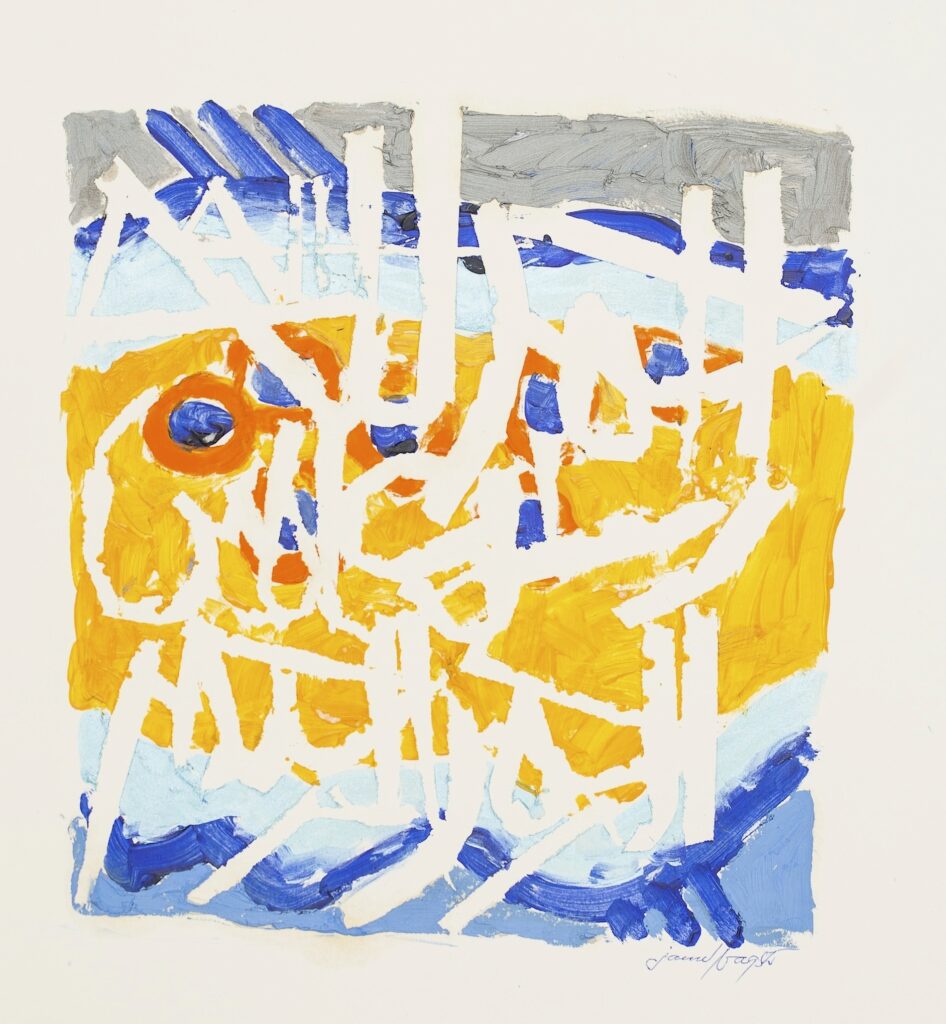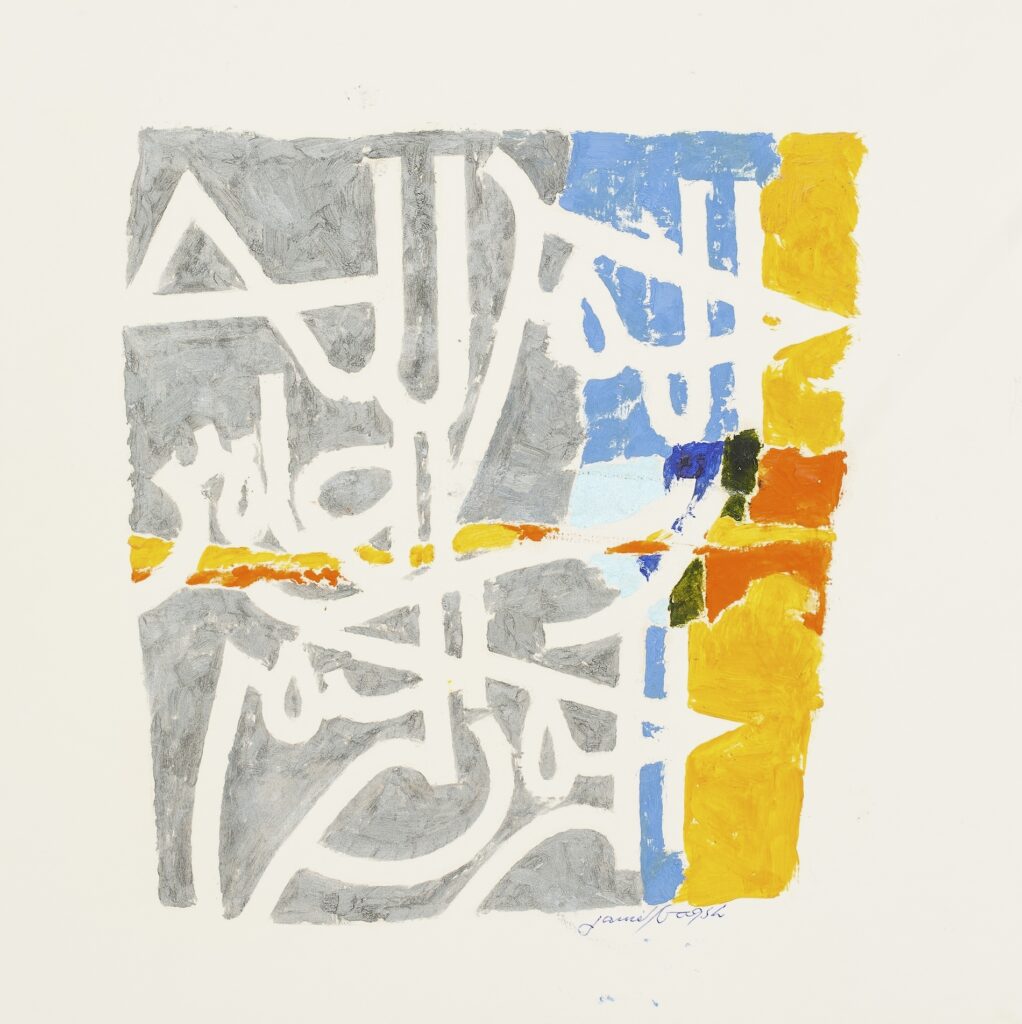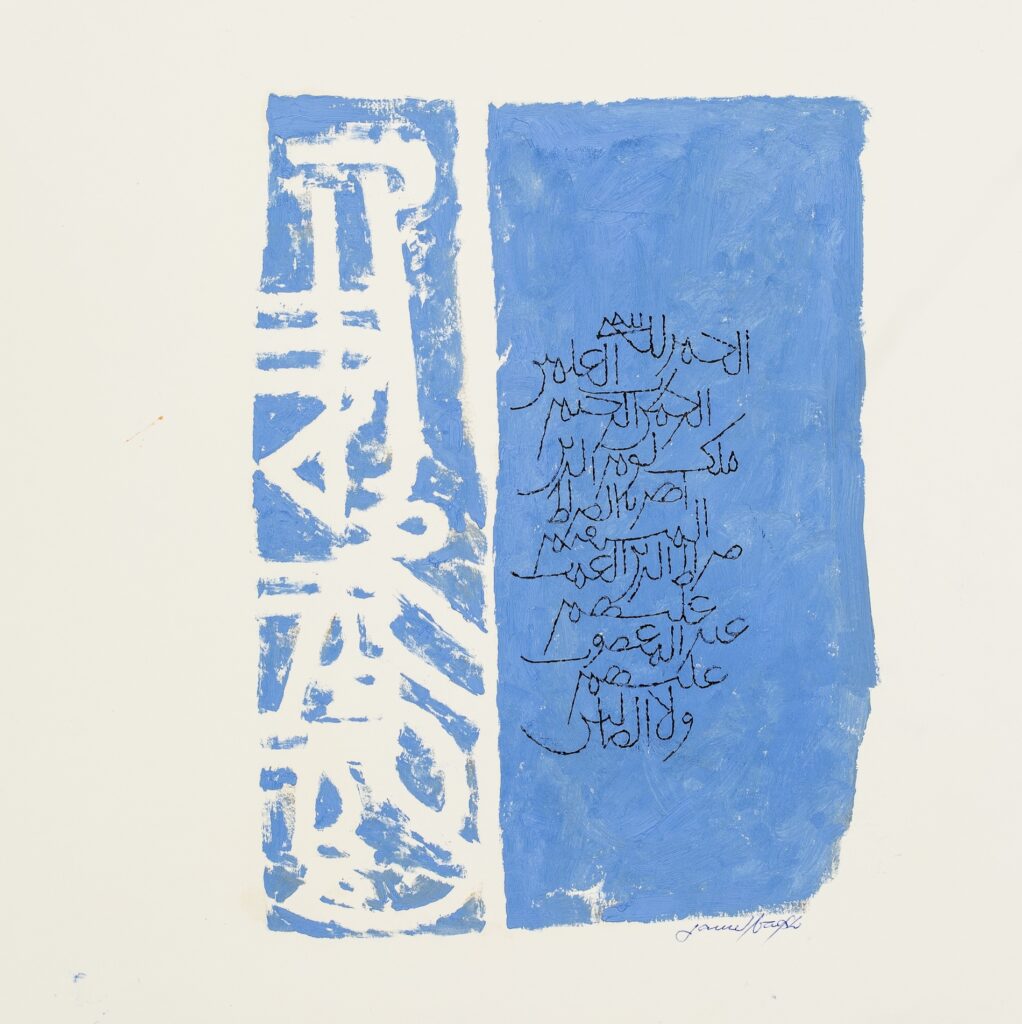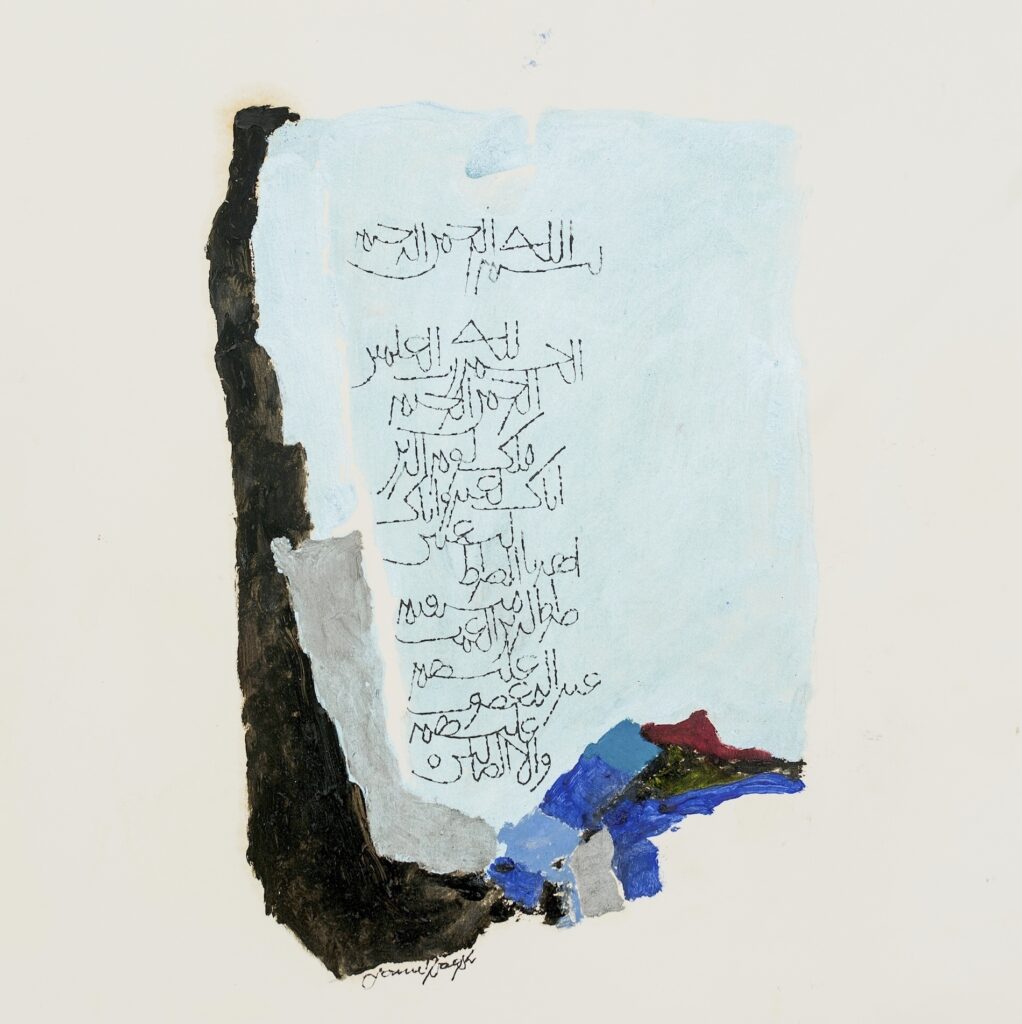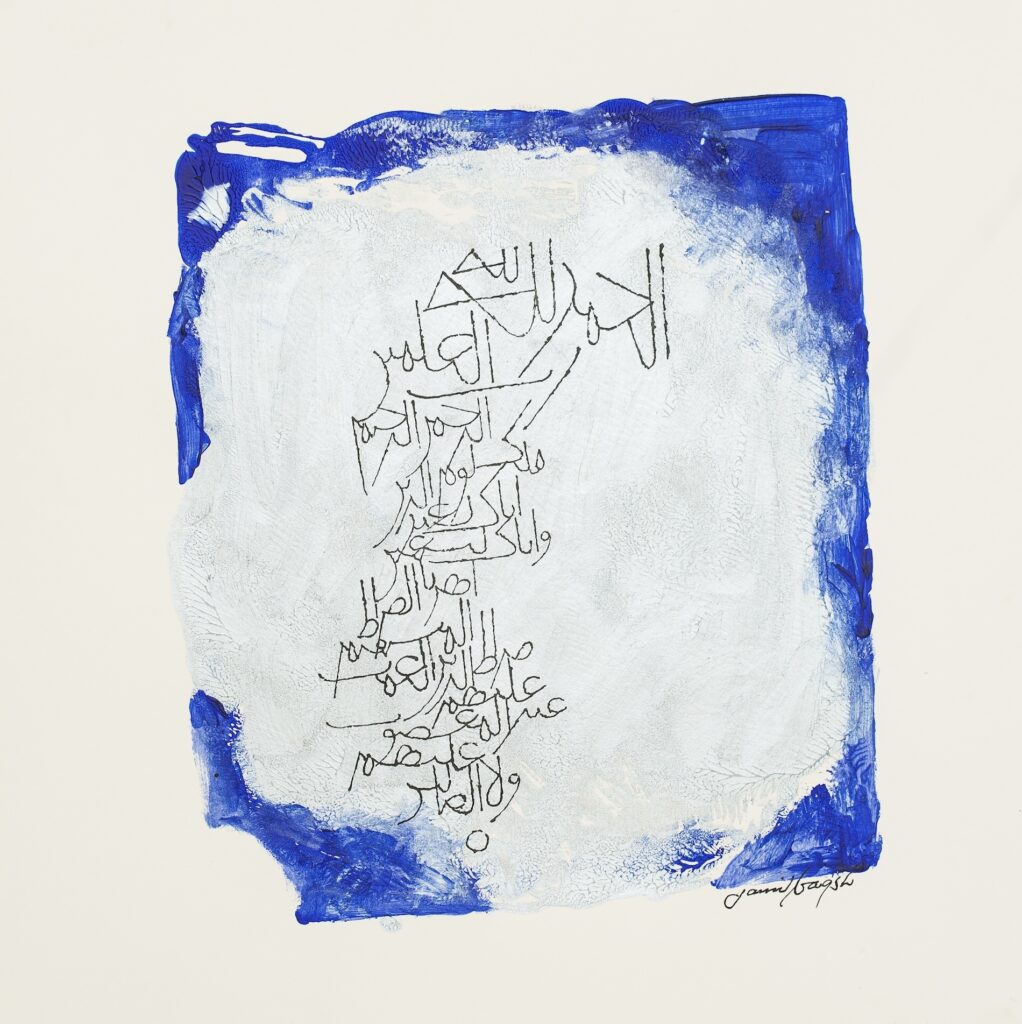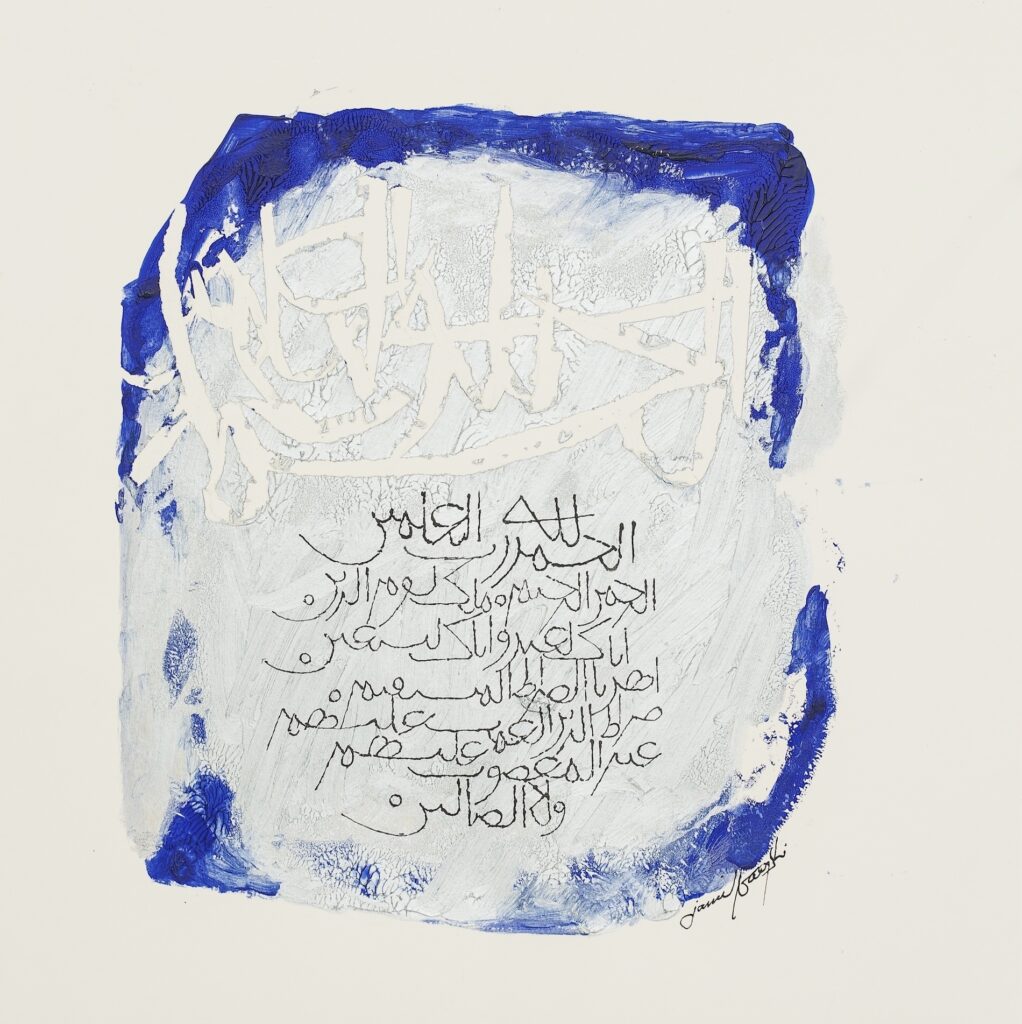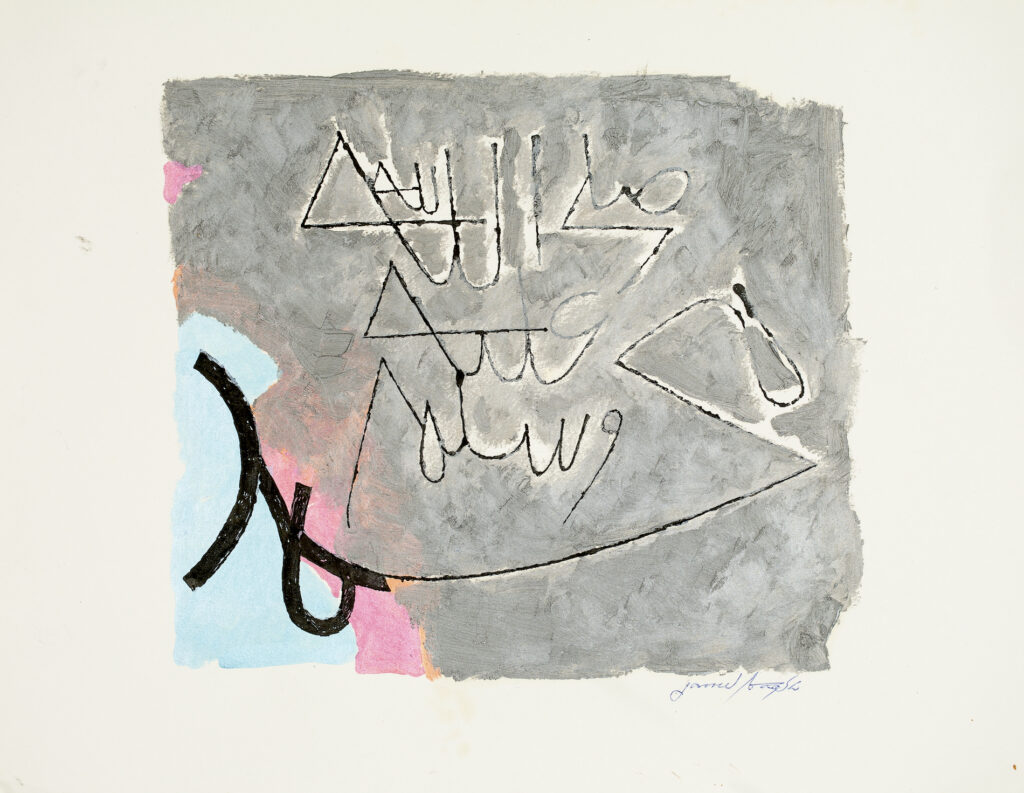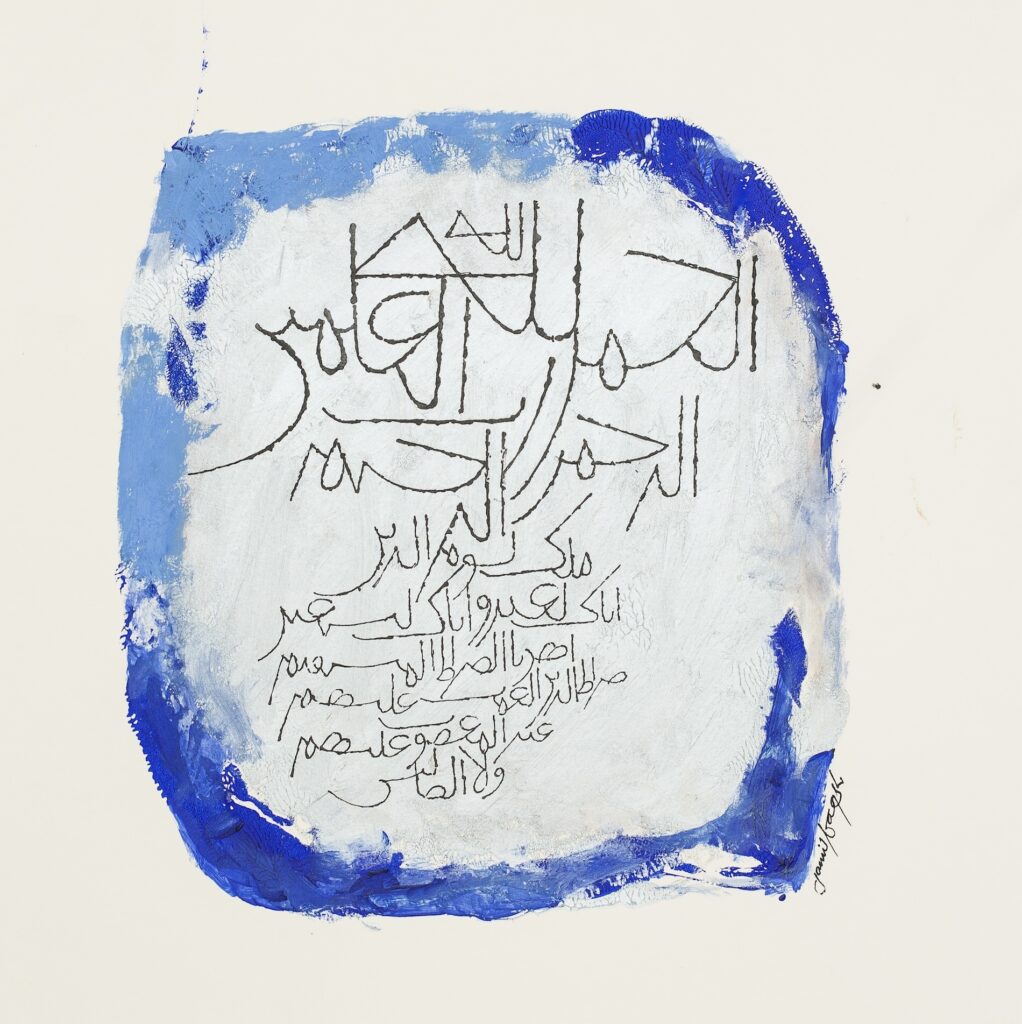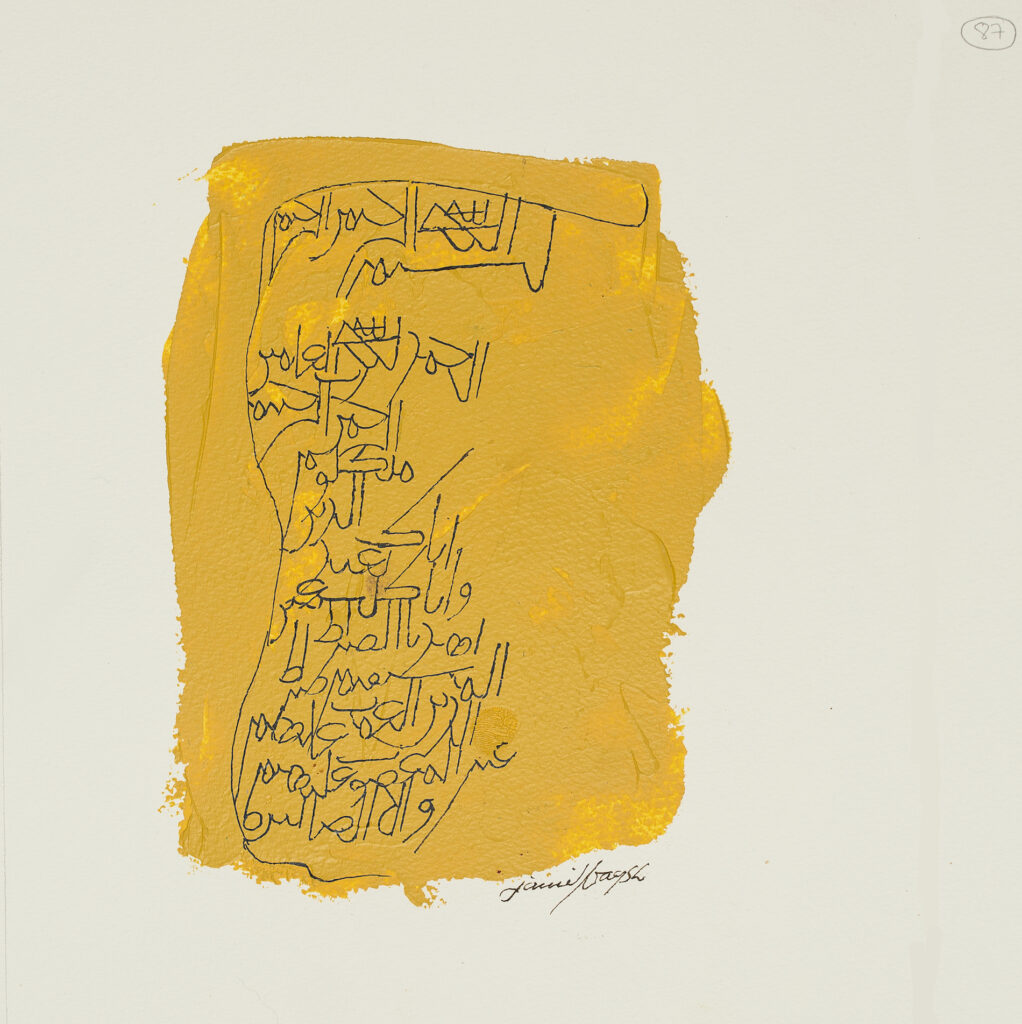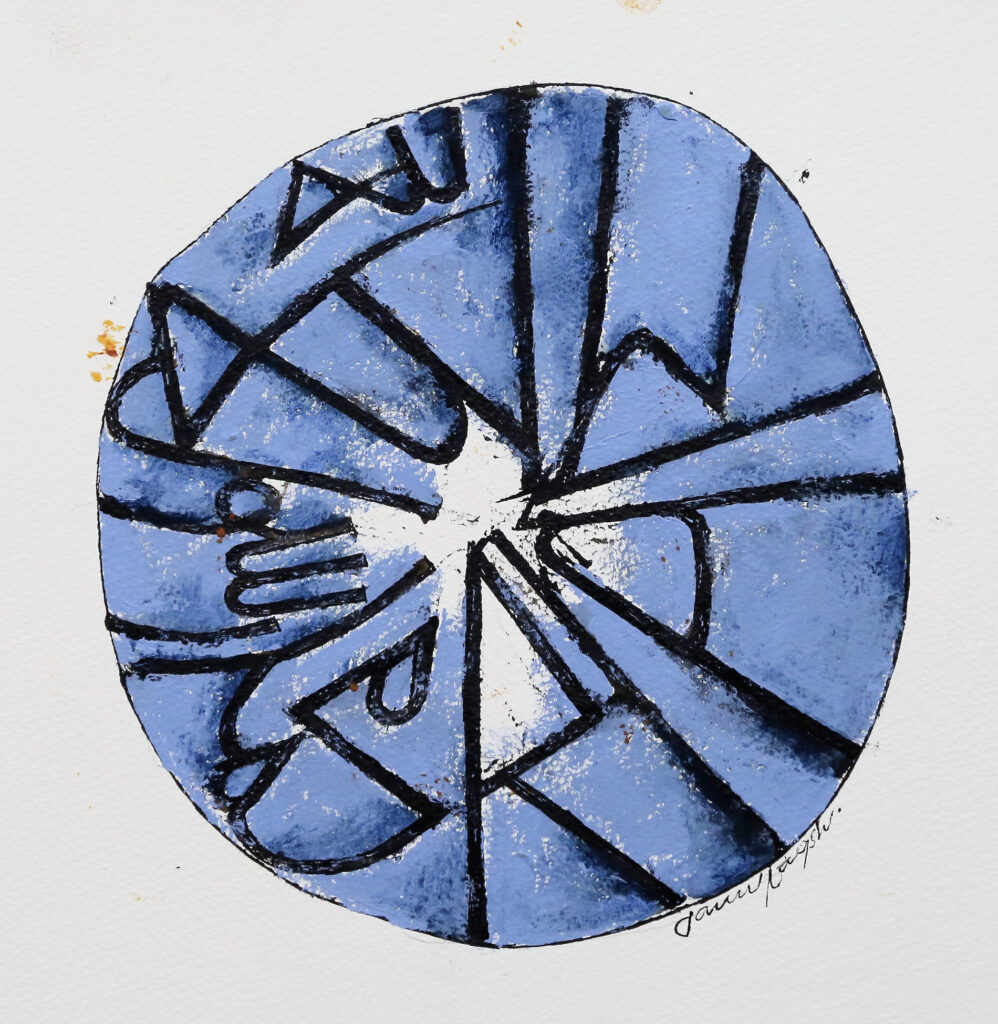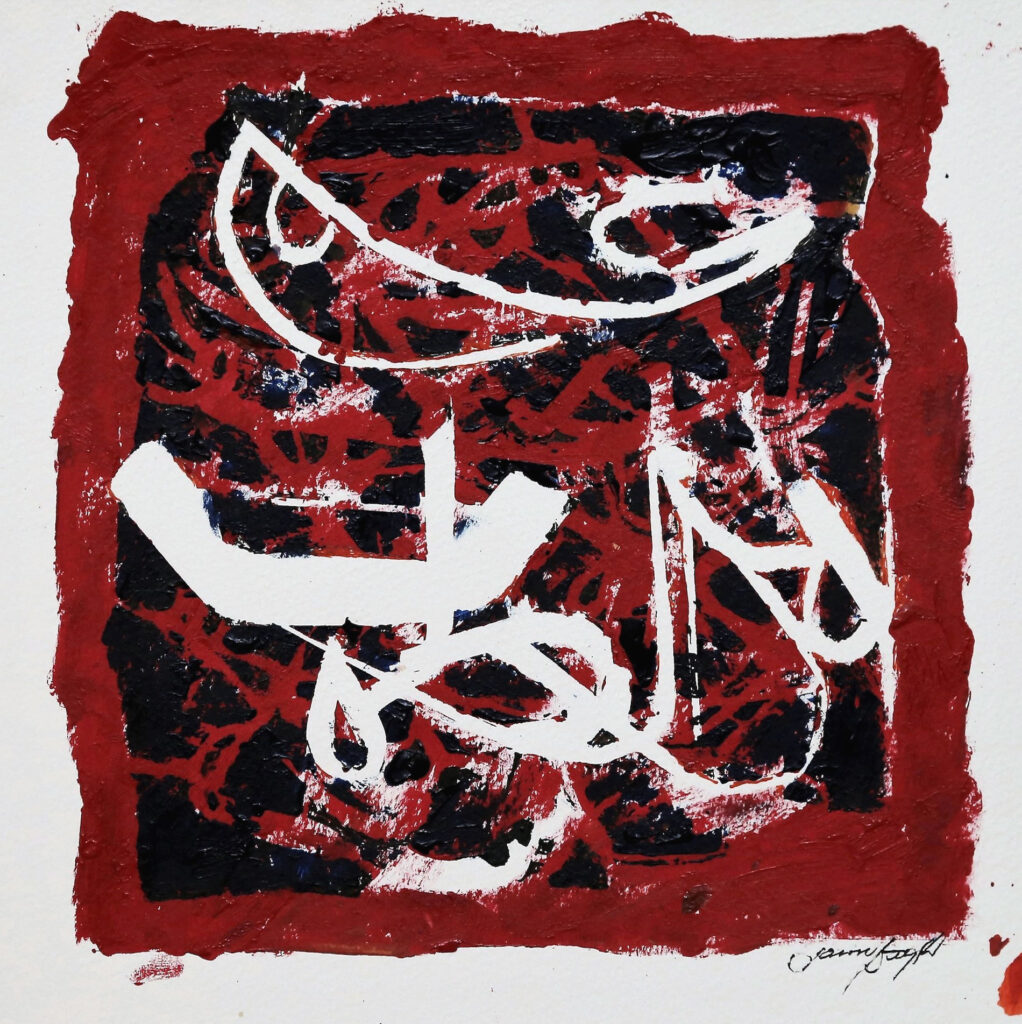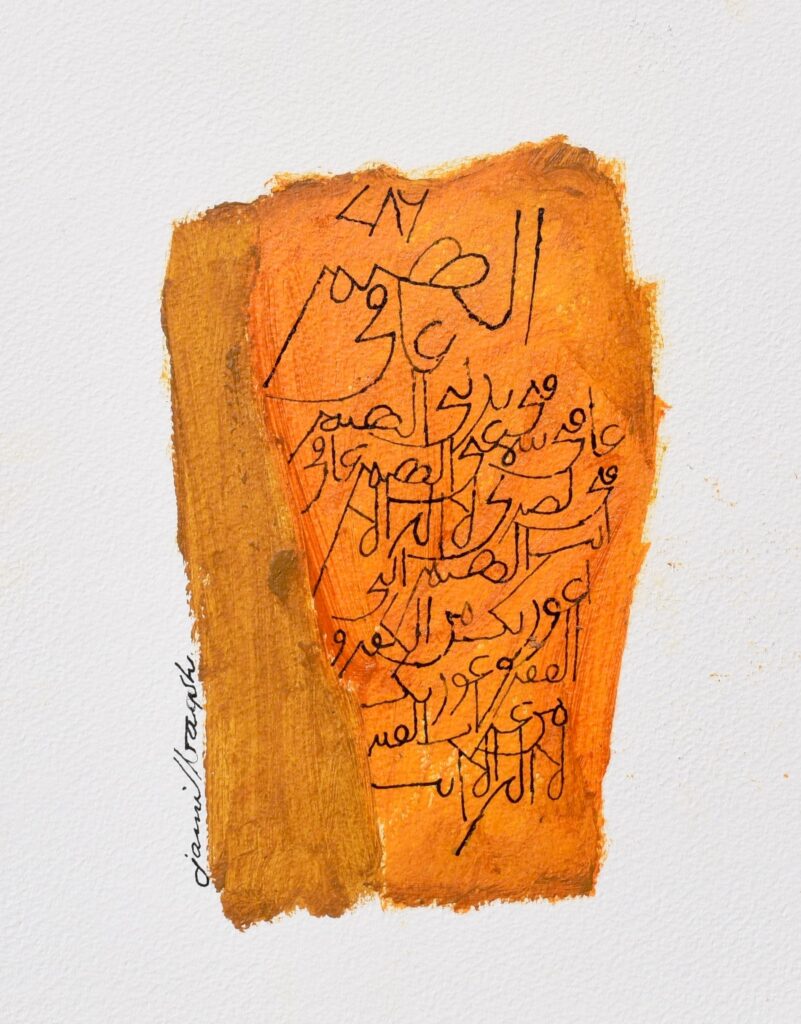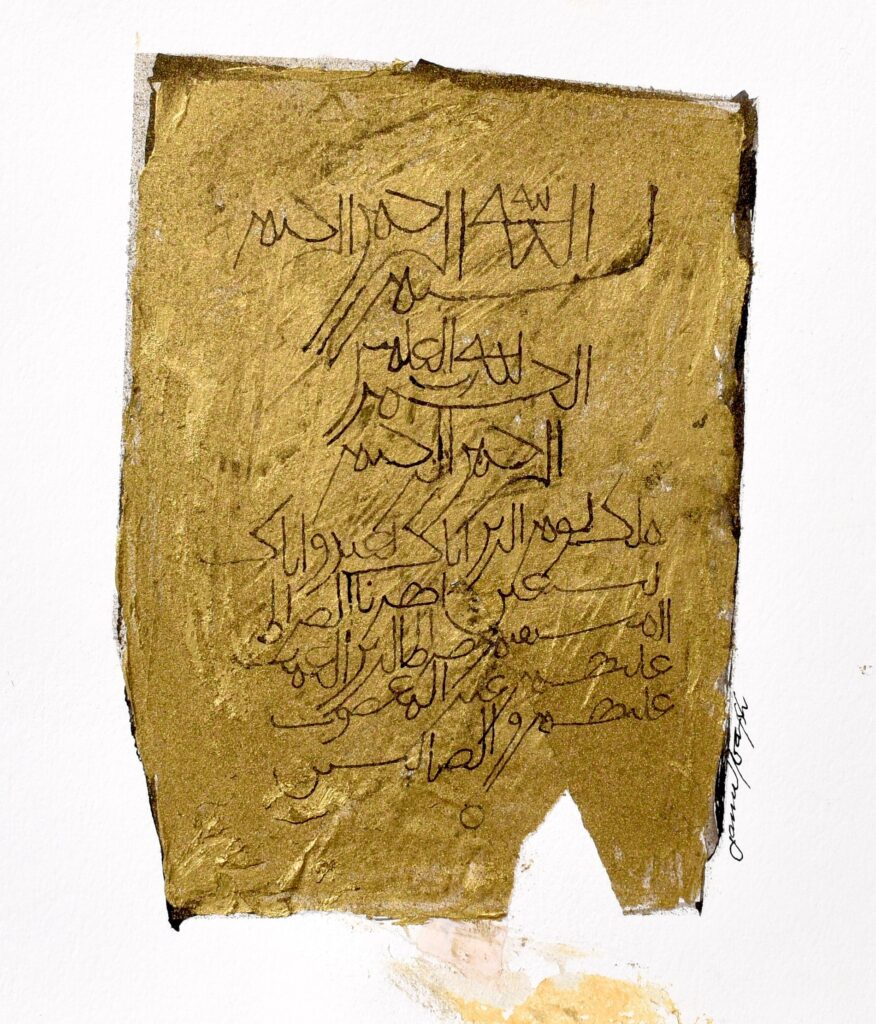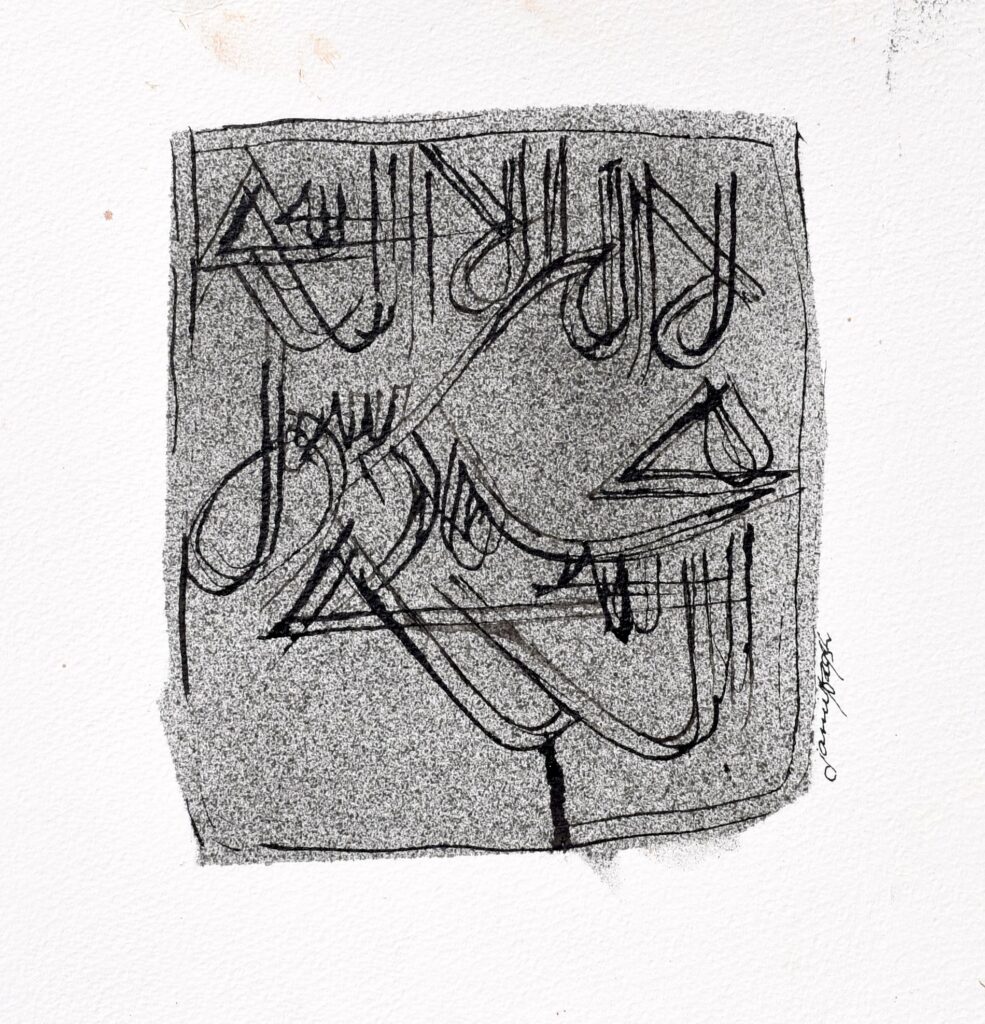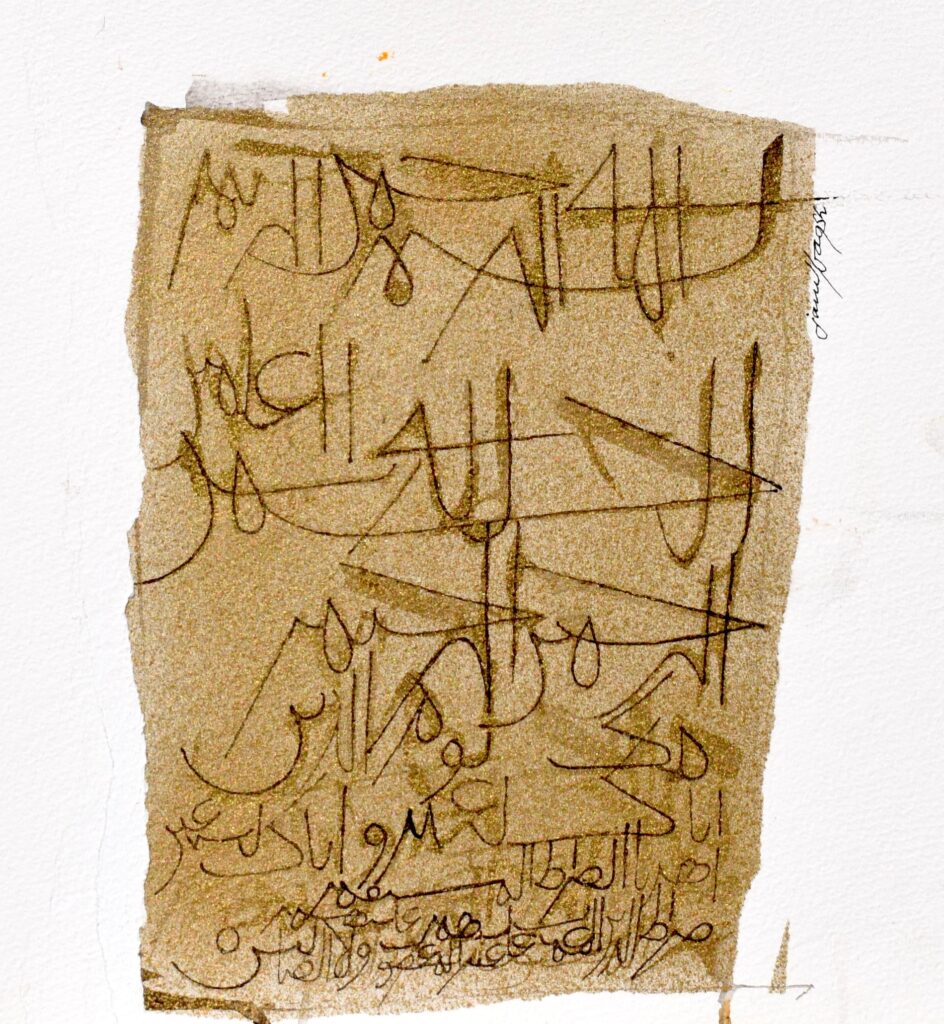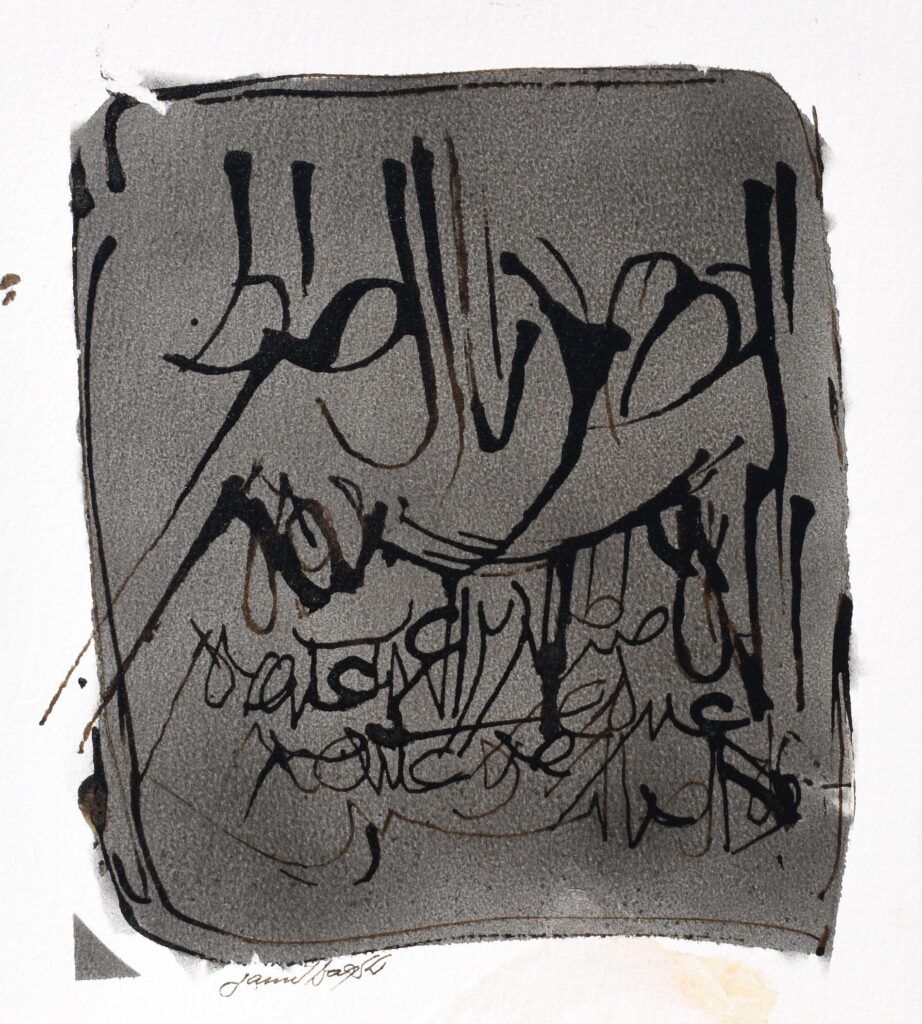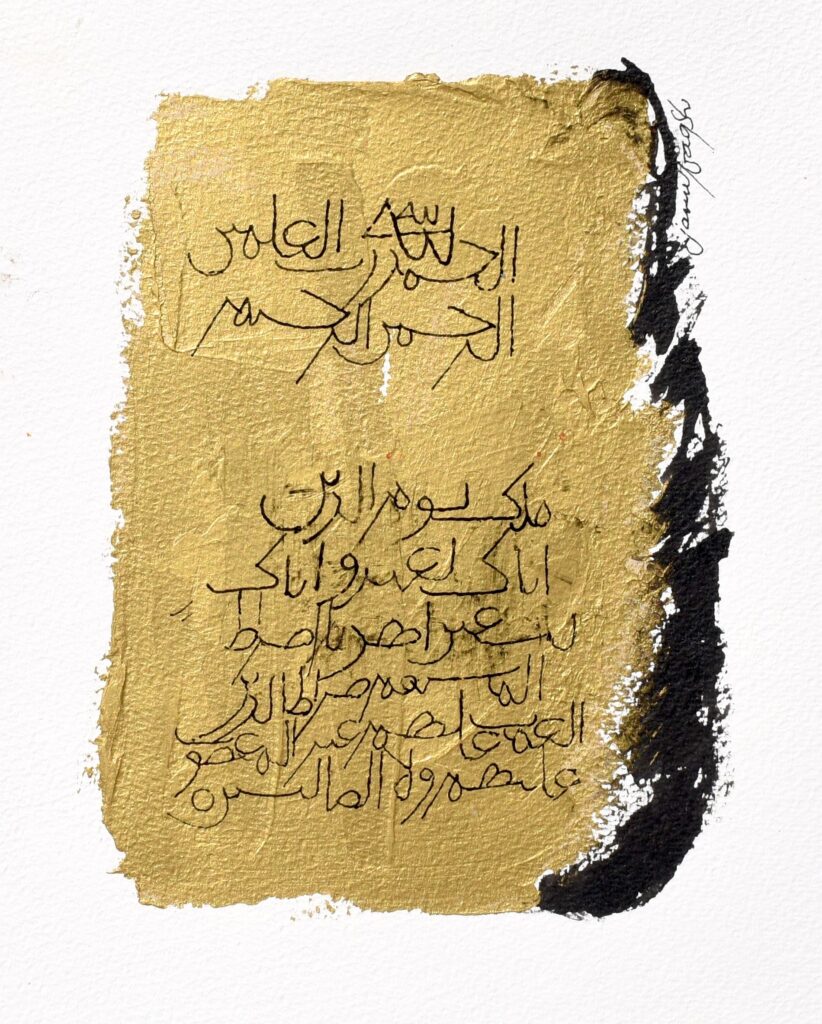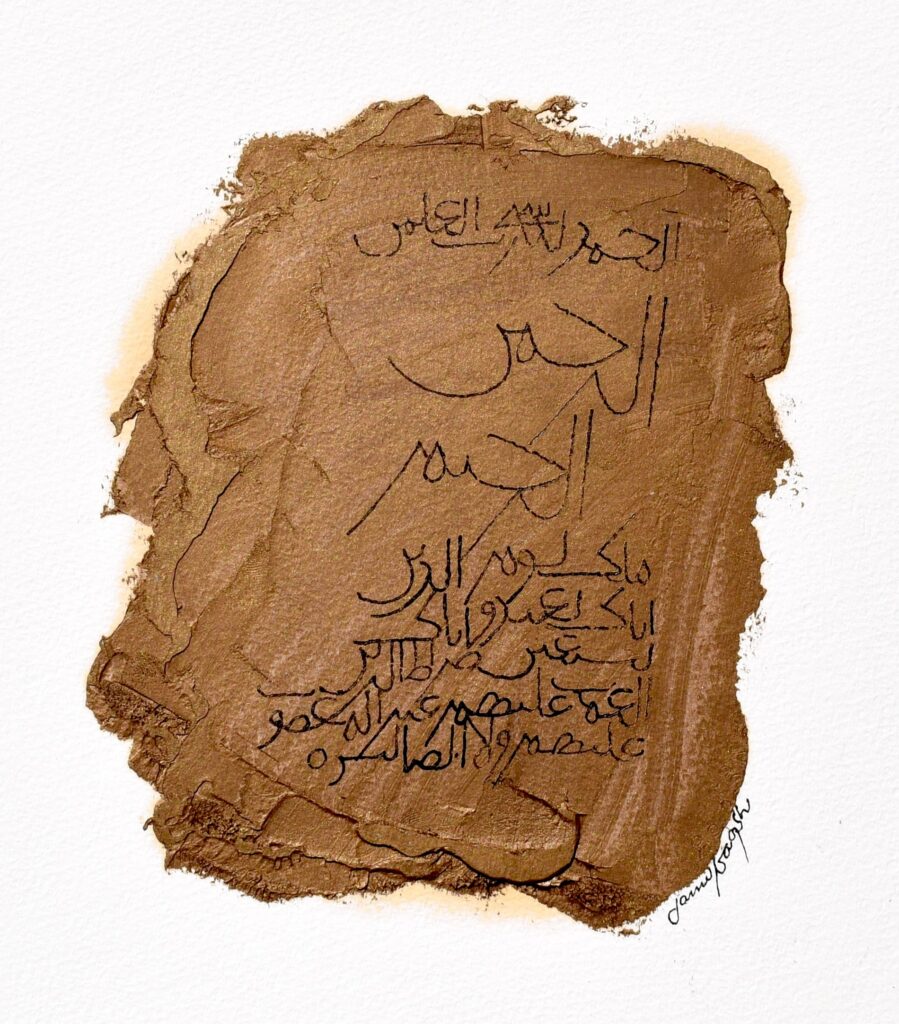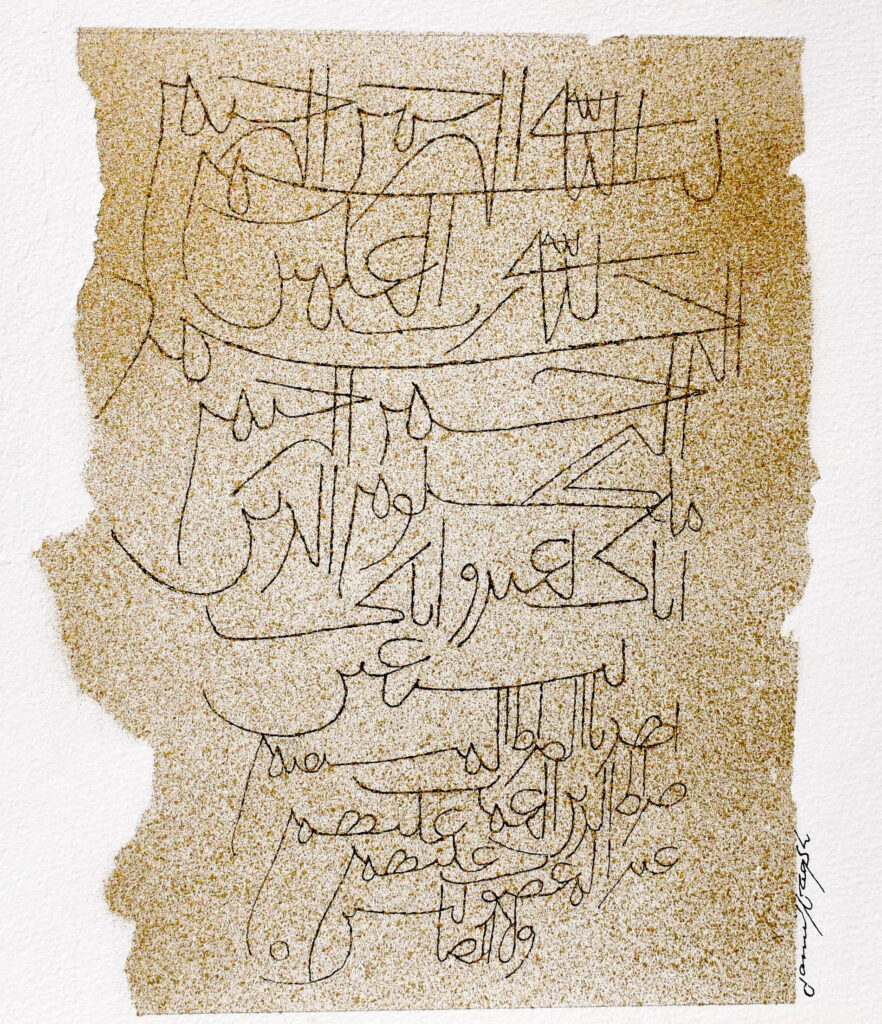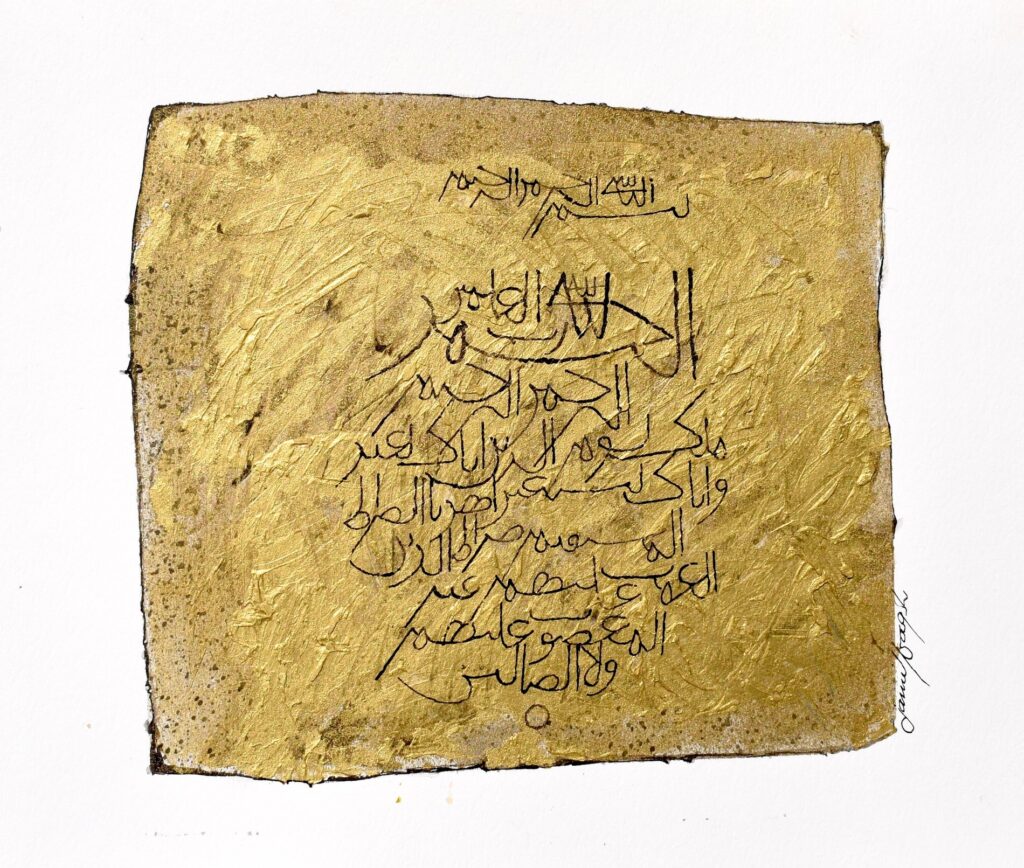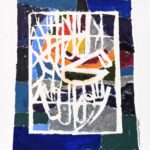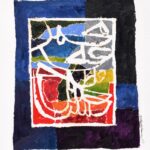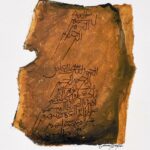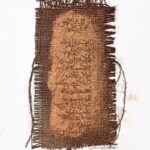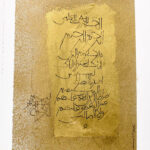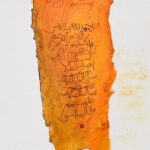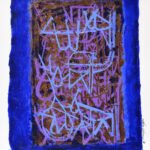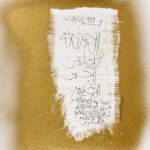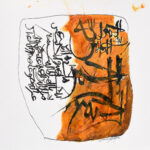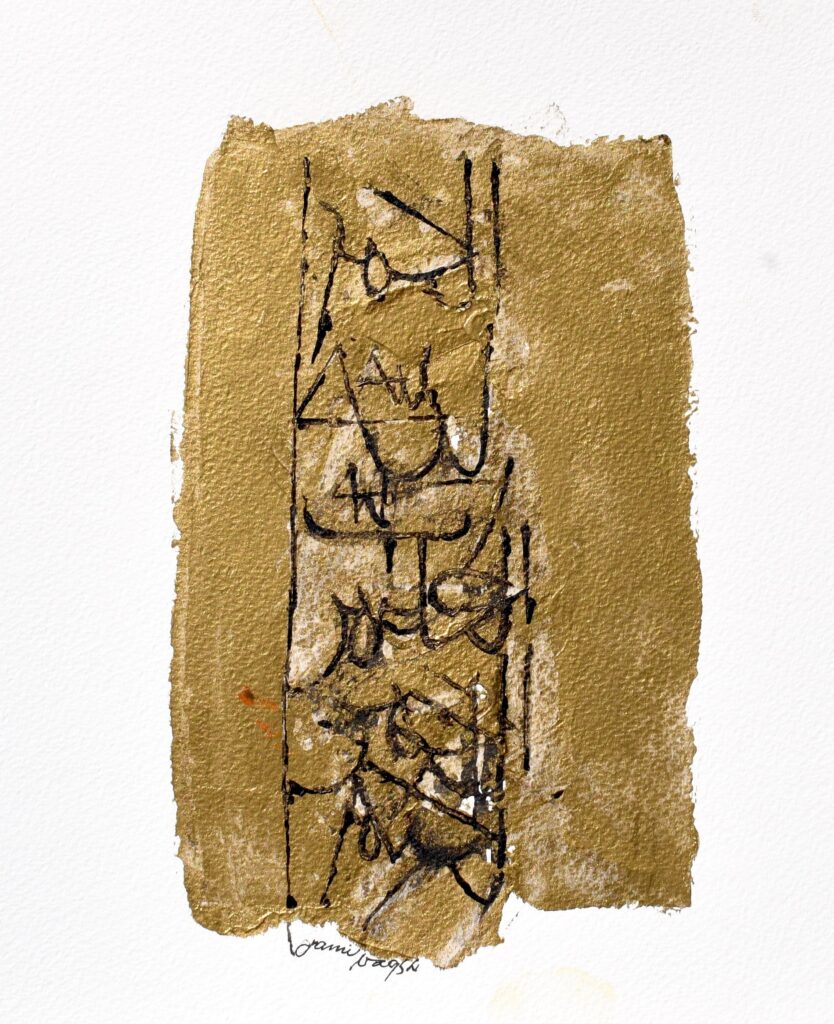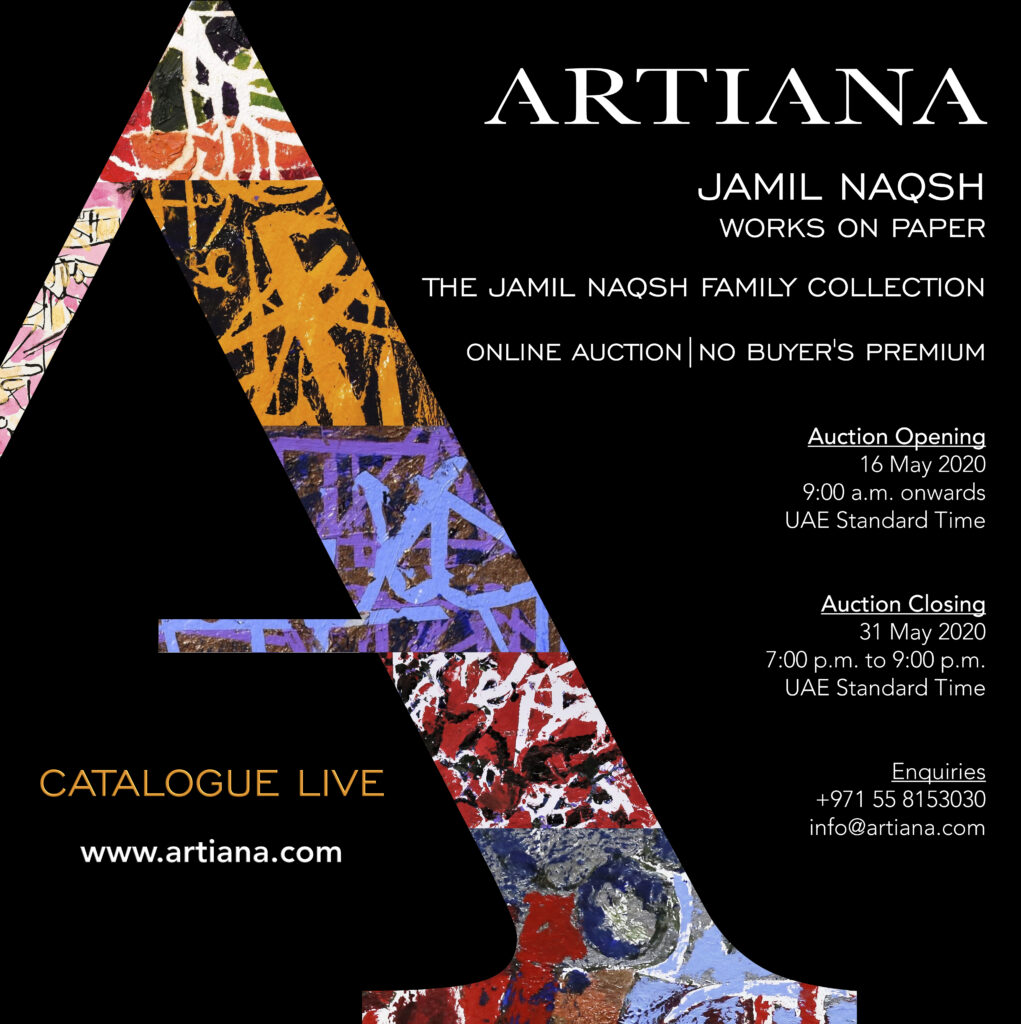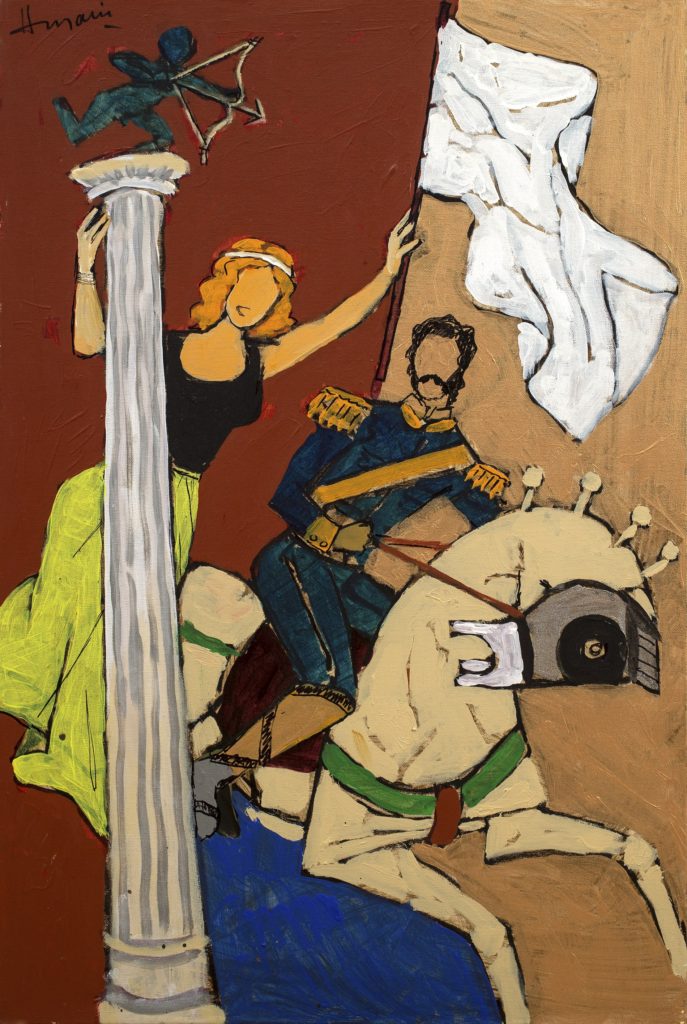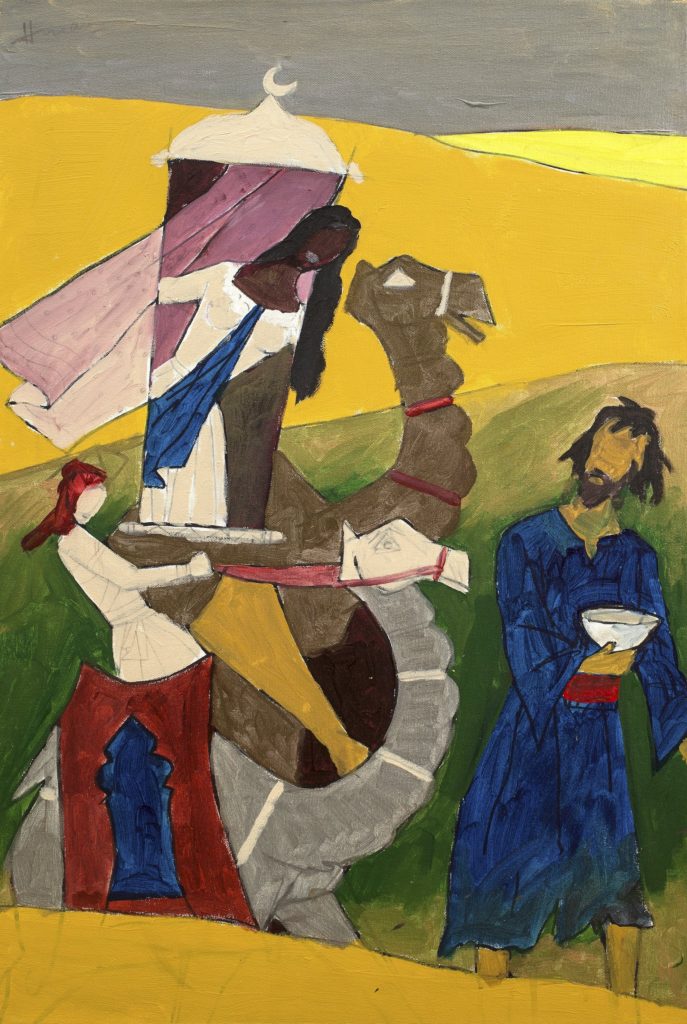ARTIANA – Highlights – Lot 21 – 30 – Jamil Naqsh (Works on Paper) – Online Auction – No Buyer’s Premium – 16-31 May 2020
ARTIANA Honors Pakistani Legend Jamil Naqsh With an Unmissable Online Auction
by Angie Kordic (Published May 15, 2020, for widewalls.ch)
Jamil Naqsh was someone who believed that ”an artist must work out his aesthetics and know where they are coming from; and that they must first be recognized and understood in his environment before venturing further.” The Pakistani master created work that is deeply personal and emotional, often focusing on the same subjects and recreating them in a variety of forms, each of them new and fresh, however.
He was a man who lived for his art until the very end, when on May 16, 2019 he died at the age of 79. Now, on the anniversary of his death, Lavesh Jagasia and his auction house ARTIANA are organizing a special sale honoring his legacy and remembering his life.
A collection of Jamil Naqsh’s rare and unseen works on paper, coming from the Jamil Naqsh Museum and the artist’s family, will be available for purchase online from May 16 through 31, 2020. The buyers can choose among 100 of his Quranic Calligraphies that feature verses from the beginning verse of the Holy Book. As delicate, dedicated abstractions, these pieces aim to offer comfort and solace in these trying times, and to once again reaffirm the genius and the sensitivity of Jamil Naqsh and his art.
We talk to ARTIANA’s Lavesh Jagasia about his own relationship with Jamil Naqsh, the works in this online auction, and why collectors should not miss it.
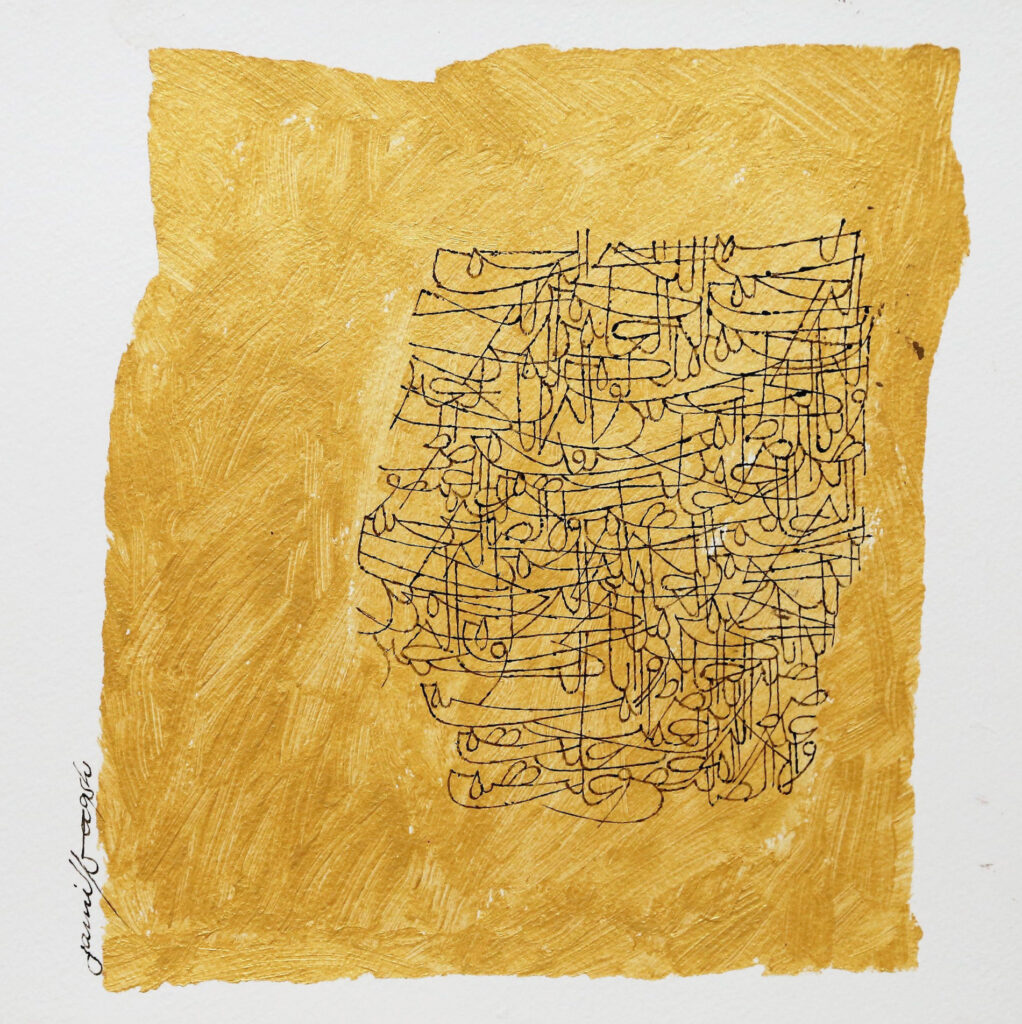
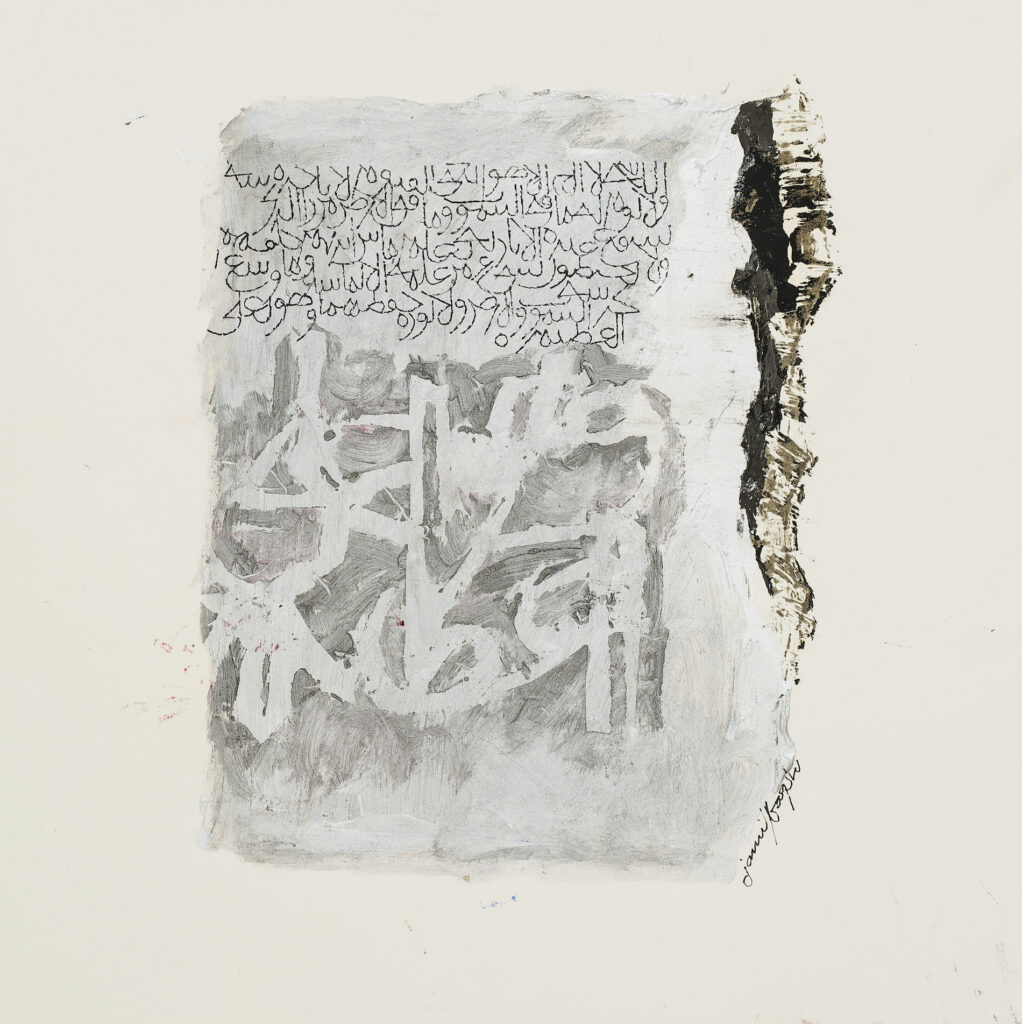
Honoring Jamil Naqsh
Widewalls: The upcoming ARTIANA auction is focusing solely on Jamil Naqsh. How would you describe your own connection to the artist and his work, as well as his family?
Lavesh Jagasia: My first meeting with Jamil Naqsh was about two decades ago in London. It was to discuss the publishing of his limited edition serigraphs, which I was focused on at that time, and was pursuing through The Serigraph Studio, an art publishing firm founded by me. This introductory meeting with him and Najmi Sura was scheduled to last for about an hour at the most, we all got along very well and were so engrossed in discussing art, art markets and it’s ecosystem that three hours had passed without realizing.
The artists that I worked with professionally were those whose works I also collected personally, and Jamil was one amongst them. The relationship both with Jamil and his family continued to grow and along with my progress in the art sphere.
ARTIANA has been successfully placing Jamil’s works through our auctions, and since the family wanted to continue with his objective of spreading his works to reach more people we collaboratively planned this auction, to achieve this objective and commemorate the artist.
Widewalls: This tribute to the great Master is paid in the form of 100 of his Quranic Calligraphies, which seem to be quite different from his “usual” paintings of the female form and pigeons. What can you tell us about these works?
LJ: Jamil Naqsh as an artist strongly believed that an artist must work out their aesthetics and always maintain a connection with their origin. He also believed that they must first be recognized and understood in their environment before venturing further.
Hence, the focus of his works on cultural traditions from his native Pakistan. Even his signature subjects of woman and pigeons, which you mention, were drawn from this and were inspired by traditional folklore and poetry.
The composition of the modern manuscripts and calligraphic representations of surahs from the Holy Book was a subject he worked extensively in the latter part of his life, as seen in this collection.
Widewalls: These are also works on paper. What kind of techniques were used by the artist in these instances?
LJ: The artist was a master painter and adept at various mediums and techniques of painting. This entire series was executed on paper using mixed media including acrylic paints to add an artistic and contemporary rendering of the otherwise traditional art of calligraphy.
Widewalls: The works contain verses from “The Surah Fatheha”, the beginning verse of the Holy Book. What are some of these writings? How would you say they resonate with the times we live in right now?
LJ: Yes, a good number of entries in the auction are based on ‘Surah Fatheha’, which actually is the first chapter of the Quran comprising seven verses, and is a prayer for the guidance, lordship, and mercy of God. This chapter has an essential role in Islamic prayer and serves as an opening for many functions in everyday Islamic life, hence resonates with the occasion, which is the commemoration of the artist on the first anniversary of his passing.
In the current environment as well it helps to spread similar sentiments of hope, guidance, and consolation.
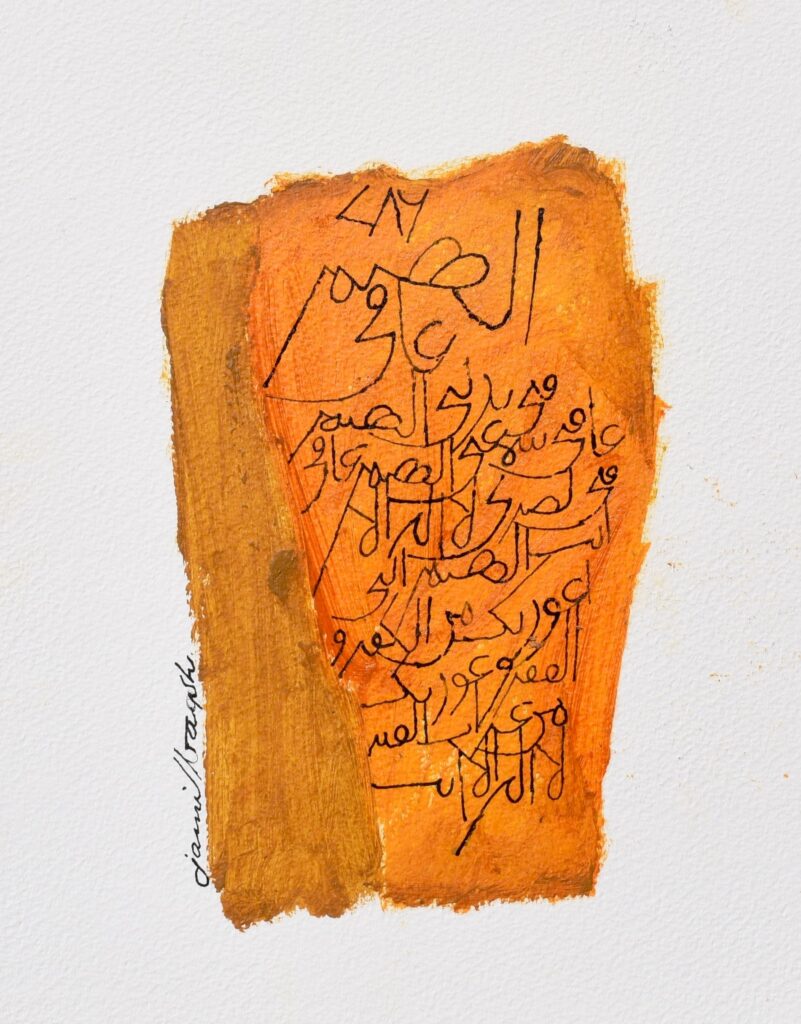
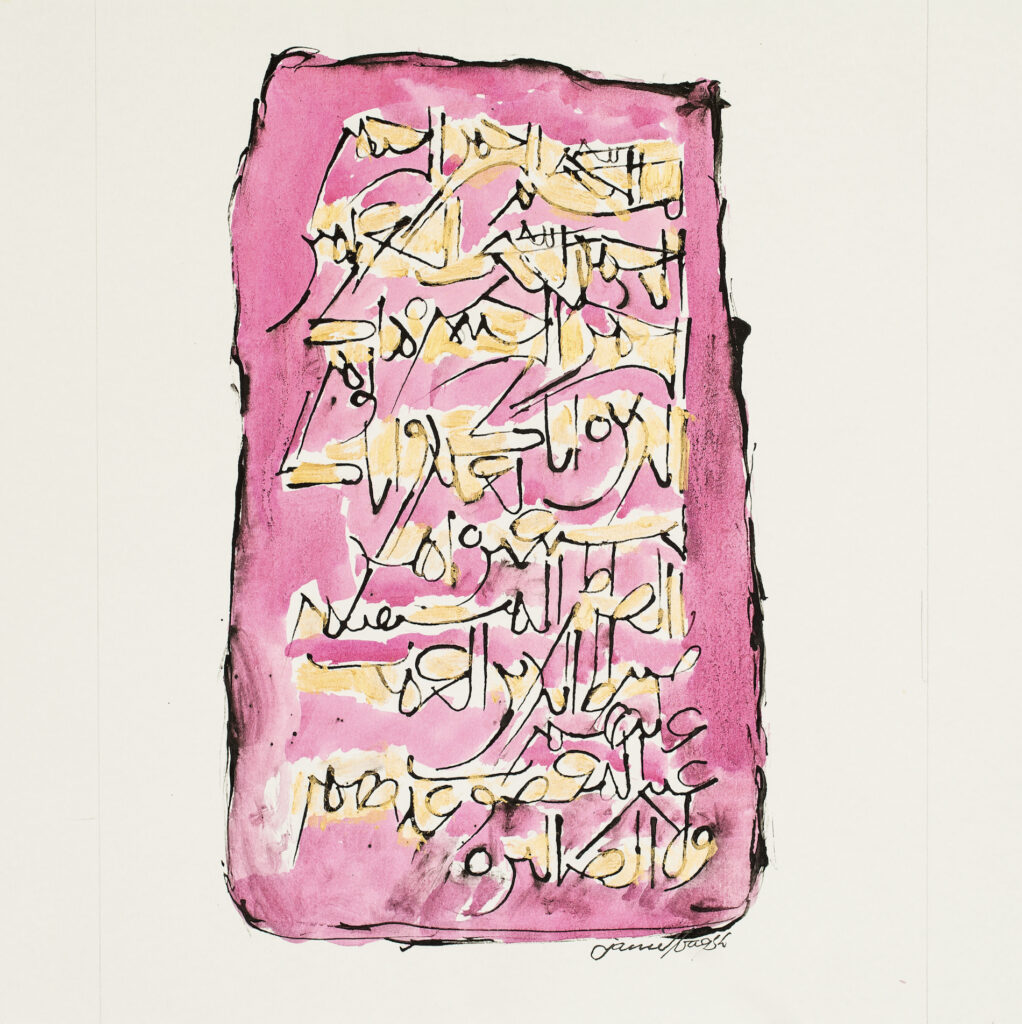
Looking Ahead
Widewalls: The sale offers a unique opportunity for the collectors to acquire Naqsh’s affordable works. What would your advice for these collectors be?
LJ: The auction catalogue has been built with a focus on spreading the artists’ legacy through his works. An essential criterion to achieve this was to keep the estimates low allowing increased engagement, the family members owning the works were sensitive to the objective and agreed.
This has presented a very unique proposition for both new and established collectors to acquire Jamil Naqsh works with impeccable provenance at extremely attractive values, and I would recommend them to take advantage of this opportunity and collect more than one as they look wonderful when displayed in a group.
Widewalls: What’s next for ARTIANA?
LJ: It sounds counterintuitive, but thankfully Artiana has not been impacted by the current pandemic since we have always conducted our auctions online. Our position has in fact solidified due to the increased screen time of our audience, and we are now focused on presenting more sales this year. The current situation has forced many clients of ours to wean off print catalogues and effectively use only on our e-catalogues, for now, this has resulted in reduced time-lines required at our end for presenting new sales.
We have enhanced the capacity of our Private Sales vertical to include selling exhibitions, and are planning to hold an online selling exhibition for Sri Lankan artist Senaka Senanayake next month, all through June 2020. This will be followed by our Arts Beyond Borders sale scheduled for July 2020 and our calendar event South Asian Art sale in October. Our African Art department which has till now been including select works in our combined sales will hold its inaugural auction at the end of this year.
You can see ARTIANA’s Jamil Naqsh e-catalog here.
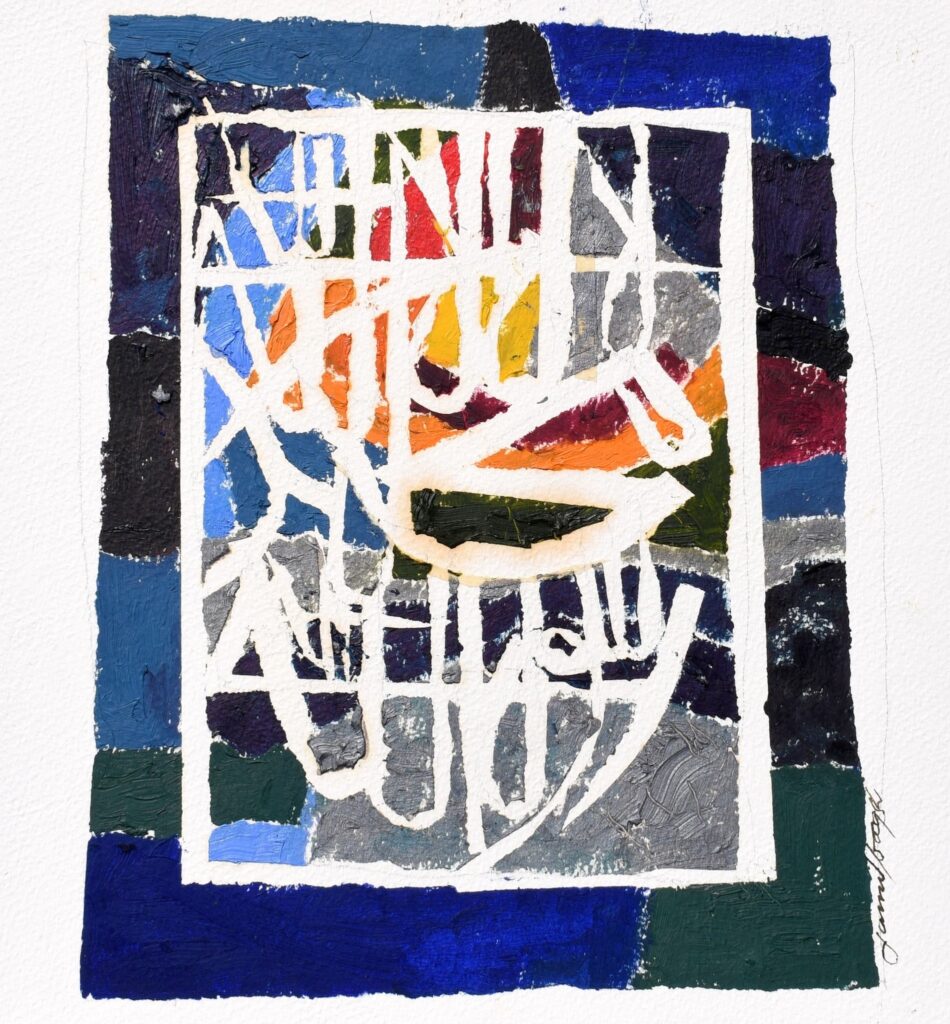
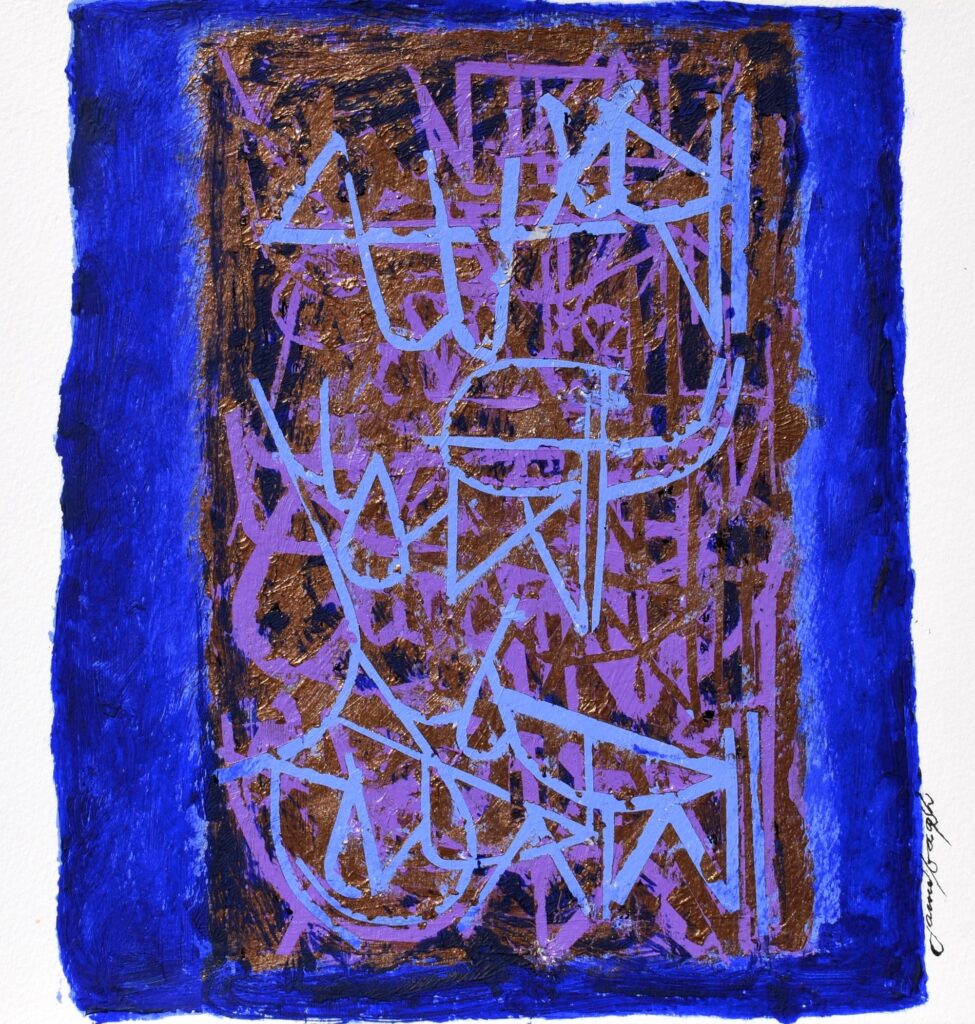
ARTIANA – Highlights – Lot 11 – 20 – Jamil Naqsh (Works on Paper) – Online Auction – No Buyer’s Premium – 16-31 May 2020
ARTIANA – Highlights – Lot 1 – 10 – Jamil Naqsh (Works on Paper) – Online Auction – No Buyer’s Premium – 16-31 May 2020
ARTIANA – Jamil Naqsh (Works on Paper) – Online Auction – No Buyer’s Premium – 16 – 31 May 2020
ARTIANA, UAE’s first home-grown auction house for art and luxury collectibles, is offering 100 paper works by Pakistani artist, Jamil Naqsh in their upcoming auction on May 16 to May 31. This sale is a tribute to the artist on the anniversary of his passing and offers a unique opportunity for friends, collectors, and enthusiasts alike to pay homage to the master and acquire one of his works with impeccable provenance.
The collection, exclusively from the Jamil Naqsh Family collection, showcases calligraphy works on paper in various media such as acrylic and ink, among others. These works which feature calligraphic interpretations of surahs from the Holy Qur’an provides a myriad of the artist’s works centered on his faith. Incidentally, the collection was curated with the majority of the lots based on Surah Fatheha, the first chapter in the Holy Book, which is traditionally prayed on funerals – to offer consolation, hope, and comfort to the departed loved one and his family on the occasion.
The collection will be sold from May 16 (9:00 am) through May 31 (9:00 pm) UAE time through an online auction at www.artiana.com, offering ample time for interested parties to take part in. Along with that, the entire sale will be conducted with Artiana’s No Buyer’s Premium policy in an essentially ‘What You Bid Is What You Pay’ format. FlexiPay which allows buyers to ‘Bid Now Pay Later’ will also be available for eligible clients. (FlexiPay scheme details are available on their website.)
The catalogue can be viewed online on their website and alternatively on ISSUU. Due to the current COVID situation, gallery viewings are suspended; however, condition reports will be available upon request.
Collectors may place bids at ARTIANA’s website, or through the mobile app available on both Google Play for Android and the App Store for Apple devices.
For information on how to register and bid, visit their website at www.artiana.com; For assistance and inquiries, call Artiana’s Help Desk at +971 55 815 3030 or write to [email protected].
ARTIANA – South Asian Art Auction – Modern & Contemporary | No Buyer’s Premium | 12-16 March 2020 | Auction Results
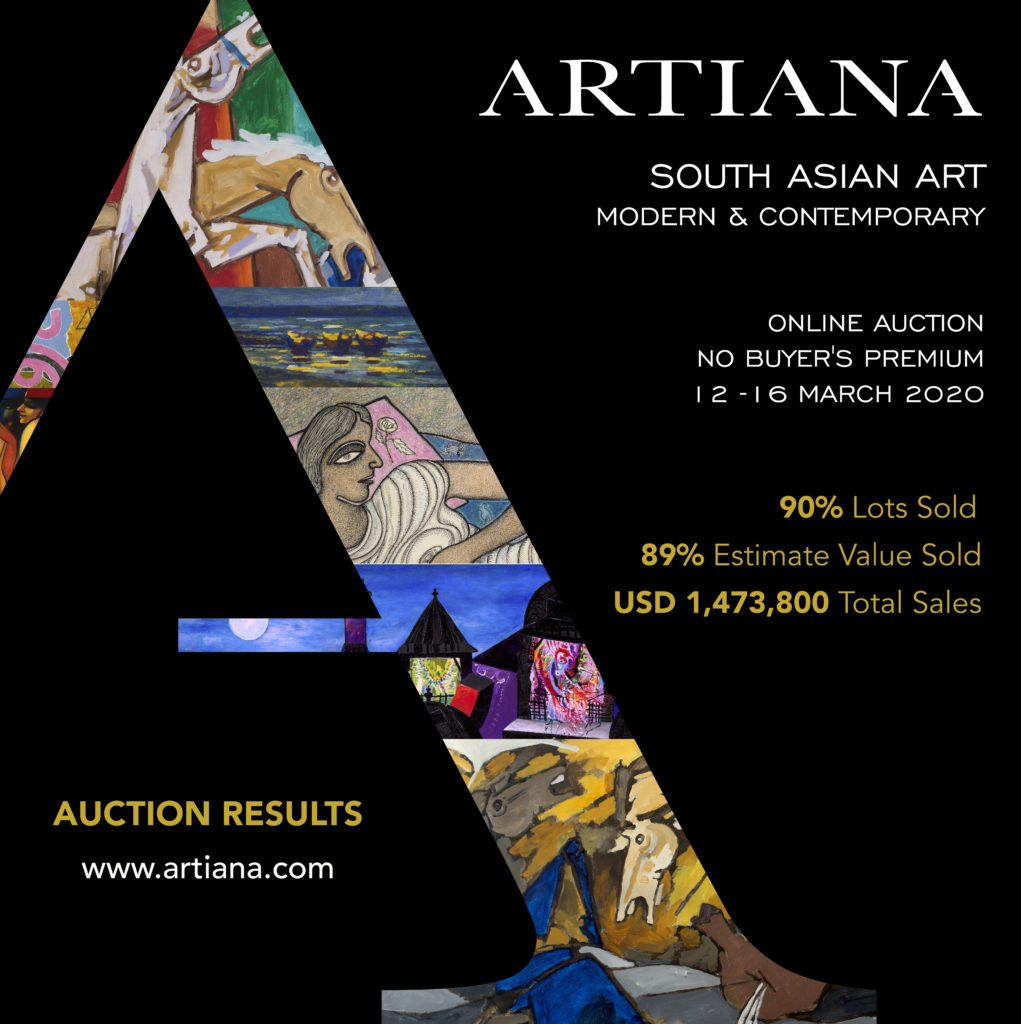
Our recently concluded South Asian Art auction was a success, with 90% of the lots sold, USD 1.4 million total sales and 89% estimate value sold.
For the complete auction result and analysis, please visit www.artiana.com.
Thank you for your bids!
Auction Catalogue – South Asian Art – ‘Modern and Contemporary’ – March 12 -16, 2020
ARTIANA – Highlights – Lot 14 – Modern & Contemporary South Asian Art – Online Auction – No Buyer’s Premium – 12-16 March 2020
M.F. Husain’s vision was deeply entrenched in Indian sensibility from the outset of his career. He incorporated local traditions and juxtaposed diverse folk elements, plying numerous sources to present a wide range of themes in his works. In them, he covered the profound and the mundane, but returned time and again to his cultural roots.
As a conscious artist, Husain looked closely at Indian literature and represented them in his paintings, reconfiguring and recontextualizing them to suit the needs of his time. He borrowed their classical themes and depicted them into his unique visual vocabulary, evolving his art and making it culturally comprehensive in the process.

Premise on the series on lovers, the current work highlights both traditional and contemporary literature featuring well-known characters and beloved stories juxtaposed with modern elements that seem out of place yet pushed the narrative for the artist. Here, the picture depicts the great philosopher Confucius falling in love. Featuring oriental themes to frame the narrative, Confucius is seen reaching out to his love, presumably Qiguan, his wife.
In this reinterpretation, the artist used bright jewel-toned colors, even coarse lines, and postures from Indian classical sculptures in depicting the characters. These demotic stylistics, folk elements, and vibrant colors have come to characterize Husain’s signature style.
Attempting to communicate the essence of these stories in simplistic compositions, Husain transformed his protagonists into archetypal figures and depicted them with featureless faces. He stretched their personas and used the immense narrative of the story to convey deeper meaning more than the explicit imagery. By placing them in an abstracted context, they become ambivalent, their purpose extending from straight-forward representation to a more metaphorical suggestion, and thus allowing for pluralistic readings. Ultimately, however, the correct interpretation is of less importance than the characteristic ambiguity of the works.
Auction Catalogue – South Asian Art – ‘Modern and Contemporary’ – March 12 -16, 2020
ARTIANA – Highlights – Lot 12 – Modern & Contemporary South Asian Art – Online Auction – No Buyer’s Premium – 12-16 March 2020
M.F. Husain’s vision was deeply entrenched in Indian sensibility from the outset of his career. He incorporated local traditions and juxtaposed diverse folk elements, plying numerous sources to present a wide range of themes in his works. In them, he covered the profound and the mundane, but returned time and again to his cultural roots.
As a conscious artist, Husain looked closely at Indian literature and represented them in his paintings, reconfiguring and recontextualizing them to suit the needs of his time. He borrowed their classical themes and depicted them into his unique visual vocabulary, evolving his art and making it culturally comprehensive in the process.
Premise on the series on lovers, the current work highlights both traditional and contemporary literature featuring well-known characters and beloved stories juxtaposed with modern elements that seem out of place yet pushed the narrative for the artist.
Here, Cupid – the Roman God of love is shown above lovers amid war. The woman is seen waving the white flag of surrender while the man is riding on to battle. Interestingly, Cupid is depicted in blue – alluding to Lord Krishna – the god of compassion, tenderness, and love in Hinduism.
In this reinterpretation, the artist used bright jewel-toned colors, even coarse lines, and postures from Indian classical sculptures in depicting the characters. These demotic stylistics, folk elements, and vibrant colors have come to characterize Husain’s signature style.
Attempting to communicate the essence of these stories in simplistic compositions, Husain transformed his protagonists into archetypal figures and depicted them with featureless faces. He stretched their personas and used the immense narrative of the story to convey deeper meaning more than the explicit imagery. By placing them in an abstracted context, they become ambivalent, their purpose extending from straight-forward representation to a more metaphorical suggestion, and thus allowing for pluralistic readings. Ultimately, however, the correct interpretation is of less importance than the characteristic ambiguity of the works.
Auction Catalogue – South Asian Art – ‘Modern and Contemporary’ – March 12 -16, 2020
ARTIANA – Highlights – Lot 13 – Modern & Contemporary South Asian Art – Online Auction – No Buyer’s Premium – 12-16 March 2020
M.F. Husain’s vision was deeply entrenched in Indian sensibility from the outset of his career. He incorporated local traditions and juxtaposed diverse folk elements, plying numerous sources to present a wide range of themes in his works. In them, he covered the profound and the mundane, but returned time and again to his cultural roots.
As a conscious artist, Husain looked closely at Indian literature and represented them in his paintings, reconfiguring and recontextualizing them to suit the needs of his time. He borrowed their classical themes and depicted them into his unique visual vocabulary, evolving his art and making it culturally comprehensive in the process.
Premised on the series on lovers, the current lot titled ‘Laila Majnu’ is based on the popular Arabic tale “Majnun Layla” about the 7th-century Bedouin poet Qays ibn al-Mullawah and his love, Layla bint Mahdi. In the story, Qays fell madly in love with Layla; in his obsession, he composed numerous poems of love repeatedly mentioning her name and earning him the moniker ‘Majnun,’ meaning crazy. Due to his social standing and reputation, they were ultimately kept apart, driving Majnu to insanity and death.
The story dubbed as ‘the Romeo and Juliet of the East’ was passed from Arabic to several other languages and has been represented in varied artistic traditions throughout history. In this reinterpretation, Husain depicted Majnu deep in his madness – unkempt, begging for food, and wandering the deserts pining for his love. He used bright jewel-toned colors, even coarse lines, and postures from Indian classical sculptures in depicting the characters. The demotic stylistics, folk elements, and vibrant colors characterize Husain’s signature style.
Husain attempted to communicate the essence of the story in simplistic composition, transforming his protagonists into archetypal figures and depicting them with featureless faces. He stretched their personas and used the immense narrative of the story to convey deeper meaning more than the explicit imagery. By placing them in an abstracted context, they become ambivalent, their purpose extending from straight-forward representation to a more metaphorical suggestion, and thus allowing for pluralistic readings. Ultimately, however, the correct interpretation is of less importance than the characteristic ambiguity of the works.
Auction Catalogue – South Asian Art – ‘Modern and Contemporary’ – March 12 -16, 2020
